The region of Central Asia has been at the cross roads of human civilization for millennia, dating back to when its cities played a key role as mid way provisioning stops on the Silk Road. Its central location meant that conquering empires were always waging war to control it. From the Parthians to the Persians, from Alexander the Great’s Macedonians to Genghis Khan’s Mongols, from Timur and fast forward to Stalin – there has been no dearth of history’s great empire builders who have not coveted this region.
Historically this was a nomadic people, who have now mostly settled to urban life, although some nomadic communities still persist. Today Central Asia consists of the 5 Stan countries that were formerly creations of the Soviet Union: Turkmenistan, Uzbekistan, Tajikistan, Kyrgyzstan, and Kazakhstan. Stan means “the land of”, so each of the country names simply signify their ethnic majority people. Geographically the region boasts a varied landscape – from windswept steppe grasslands, arid fossil fuel rich deserts, and picture perfect lakes, to lush forests and towering mountain range peaks.
During my summer sabbatical this year I spent a couple of weeks on a solo trip through the 5 Stans of Central Asia, and I was blown away by the rich history, unique architecture, stunning natural beauty, and friendliness of the people. Here are a few highlights of my time exploring the Stans.
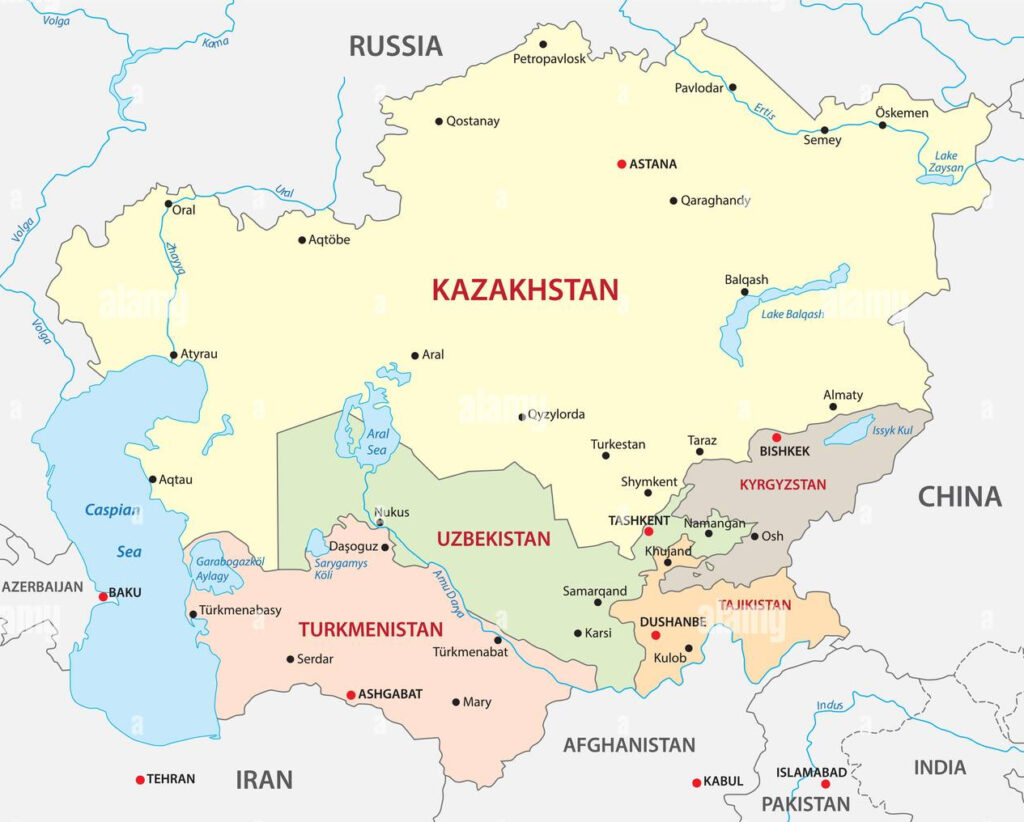
The 5 Stans of Central Asia (map credit: Alamy)
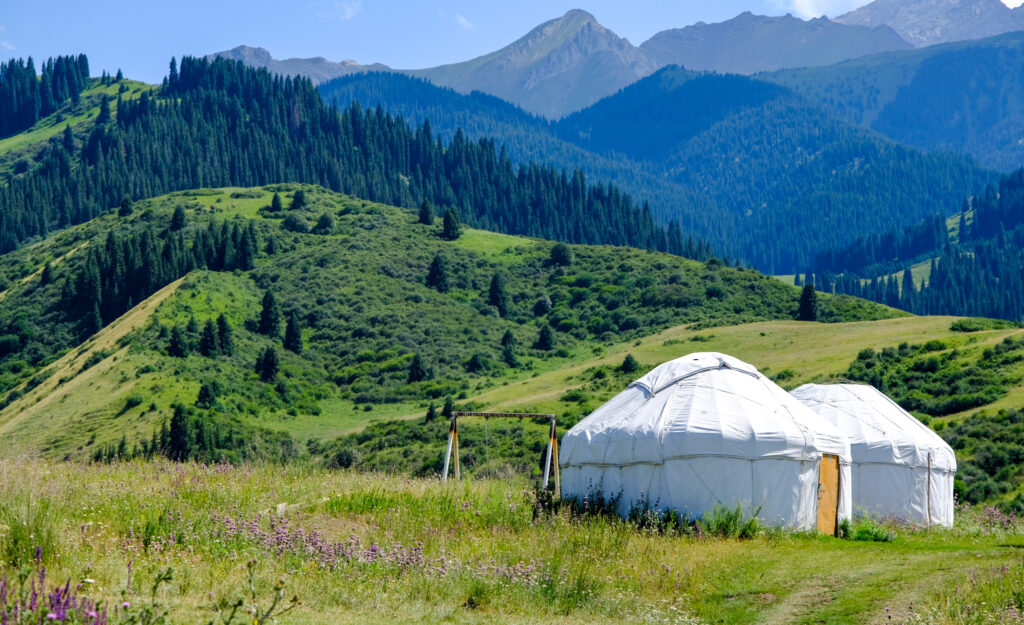
The region’s nomadic tradition abides through numerous Yurt homestays
Awestruck by the blue tiled wonders of Samarkand, Uzbekistan
The very name Samarkand conjures up exotic visions of caravans traveling on the famed Silk Road. Samarkand was one of the most important stops along the Silk Road since ancient times, and took on additional significance during the reign of Timur in the 14th century. Timur and his descendants built up Samarkand as their capital city, decorating it with the riches and treasures plundered from their empire building raids. Artisans, craftsmen and builders from all over Eurasia were captured and brought back to Samarkand – and the result is some of the most stunning Islamic architecture and monuments in the world.
Timur also known as Timur-I-lang or Tamerlane was a Turkic-Mongol ruler and the founder of the Timurid dynasty. His great-great-great-grandson Babur would eventually go on to conquer India and establish the Mughal dynasty. Timur’s legacy continues to endure beyond the borders of Central Asia – elements of the domed Timurid architecture would eventually influence Mughal style, epitomized by the design of the Taj Mahal.
Samarkand is spoilt for riches when it comes to striking Islamic architecture. The tightly packed mausoleums in the Shah-i-Zinda complex have the highest concentration of majolica blue tilework in the Islamic world. The towering Bibi-Khanym mosque, named after Timur’s wife and built with the riches he brought back from India, was one of the largest Mosques in the world. Gur-e-Amir mausoleum which is the final resting place of Timur after his death in 1405 is topped with an amazingly ribbed blue dome.
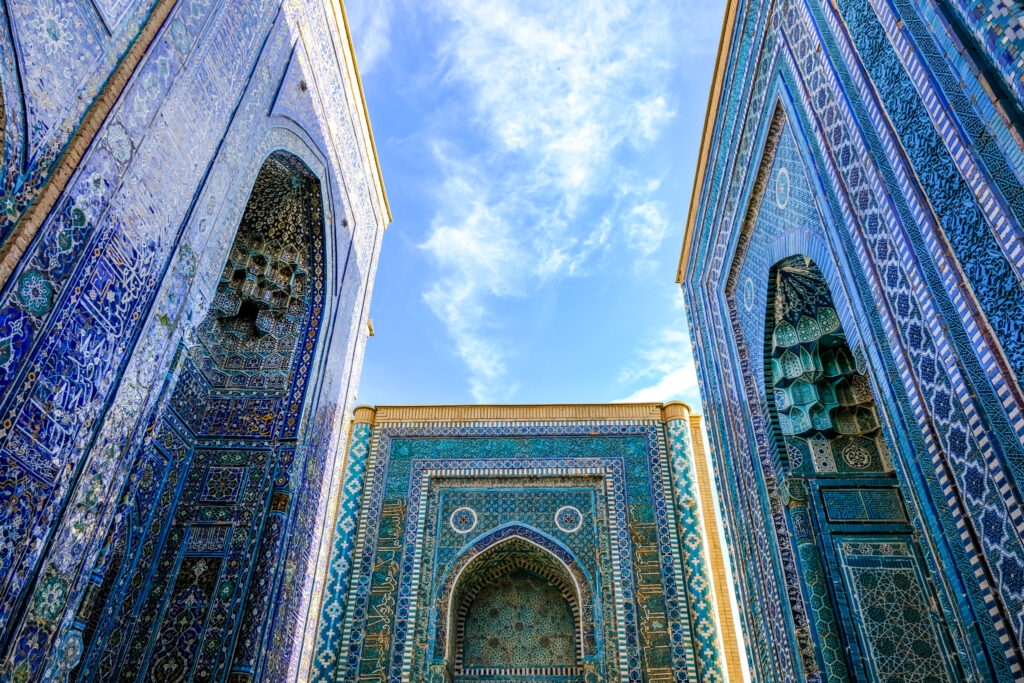
The most intricate blue tilework I’ve seen
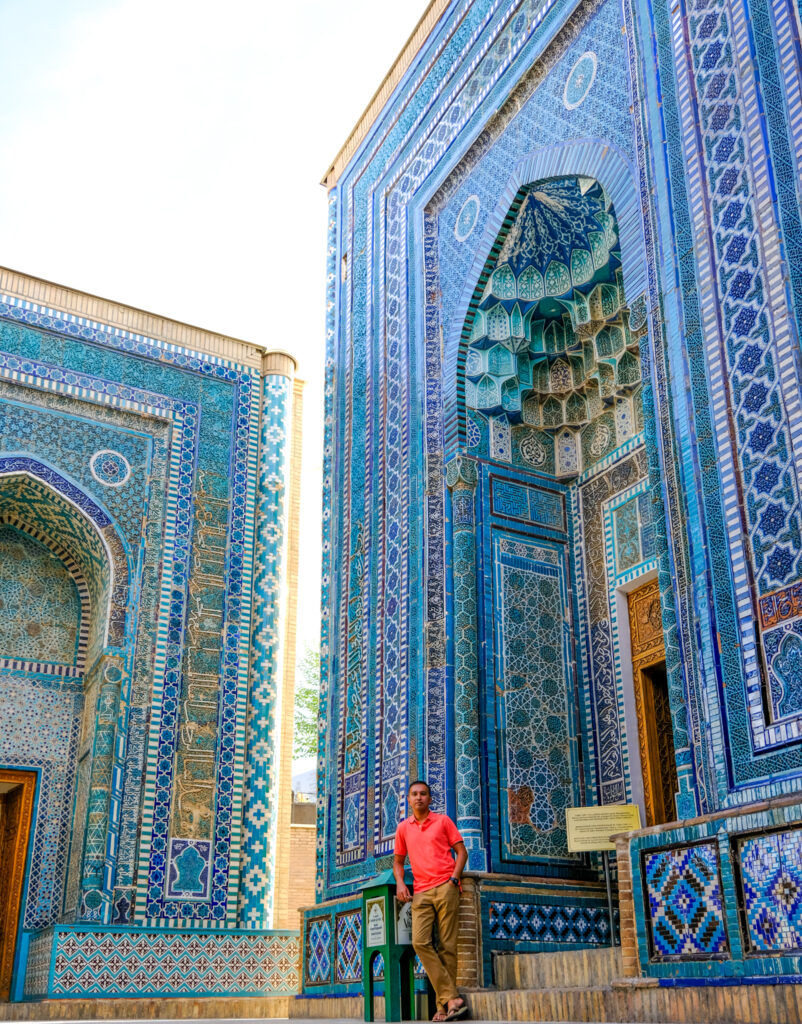
Dwarfed by the massive arches in Shah-I- Zinda mausoleum complex
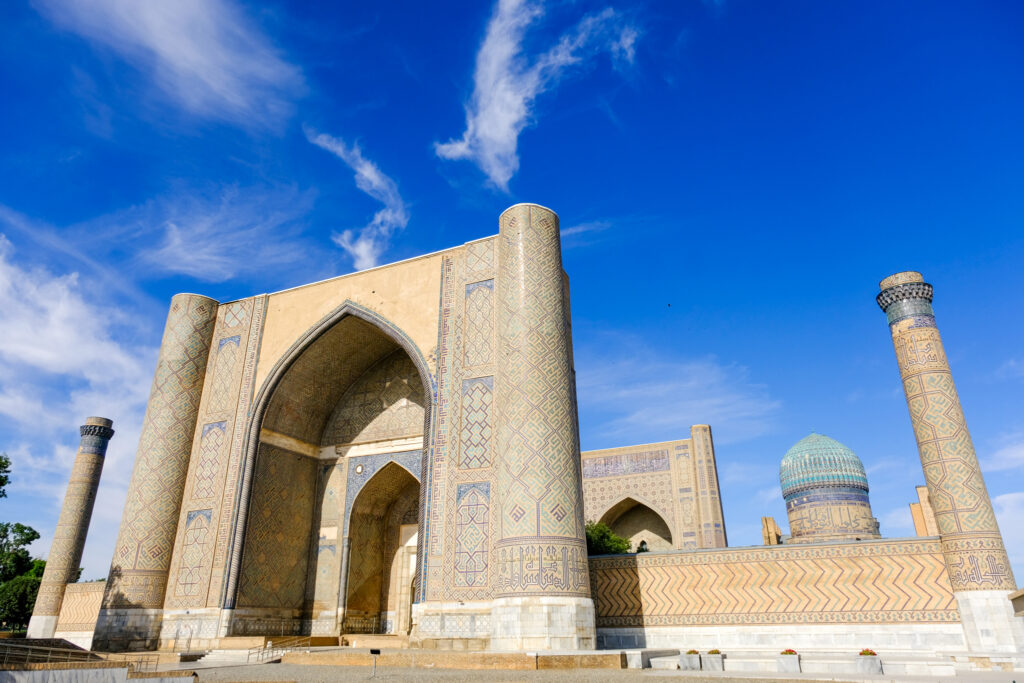
Towering archway of Bibi Khanym mosque
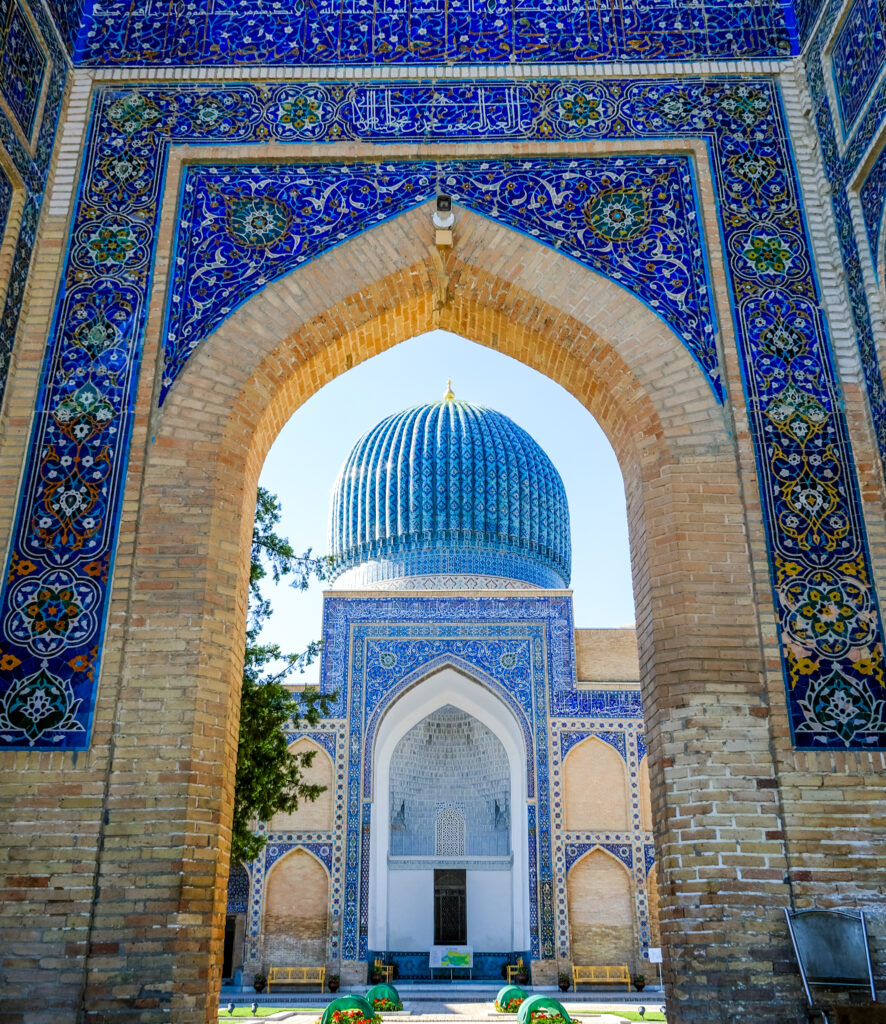
Entryway to Gur-e-Amir
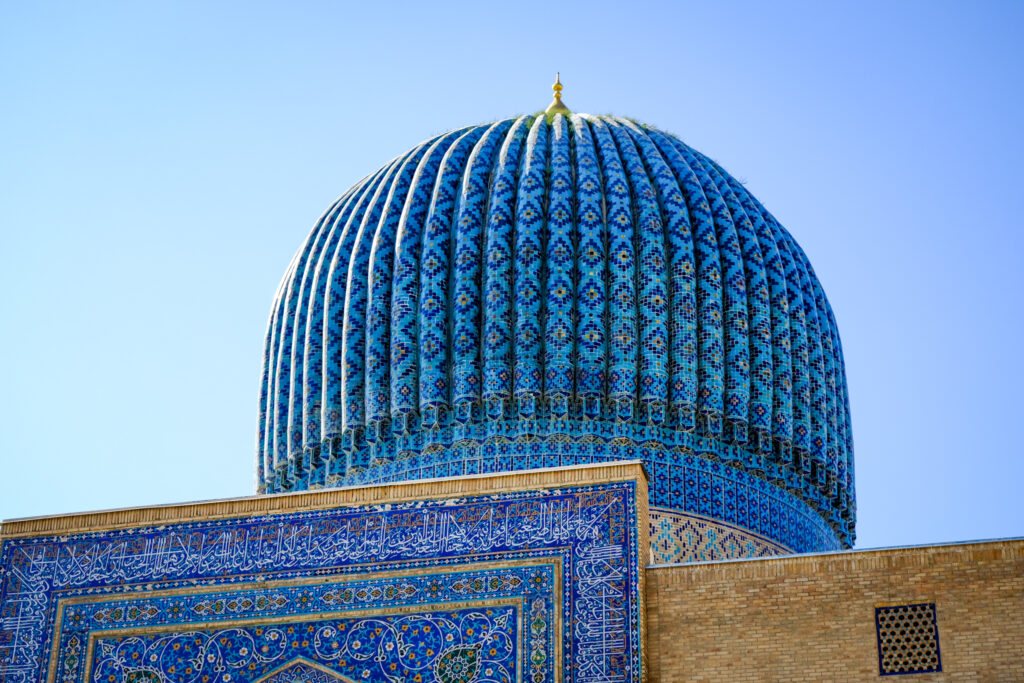
Amazing fluted dome covered in delicate tilework
But it’s crowning glory is the Registan ensemble, which is a sublime symmetrical arrangement of three stunning medrassas – Ulug Beg, Tilla Kori, and Sher Dor. Registan boasts an amazing collection of towering minarets, massive domes, and arched entrances – all adorned with painstakingly detailed majolica tile work designs. Each is unique in its own way, with Ulug Beg paying tribute to the scientific and astronomical contributions of its namesake, and Sher Dor’s extravagant Lion and human faced solar mosaics flaunting Islamic edicts against depictions of living beings. However, the highlight for me was the interior of the mosque in Tilla Kori that is decorated with the most exquisite gold and blue design work I’ve ever seen. The intricate designs feature geometric patterns and interwoven floral motifs, with the gold foil laden interiors meant to project and amplify Samarkands wealth. Truly mesmerizing!
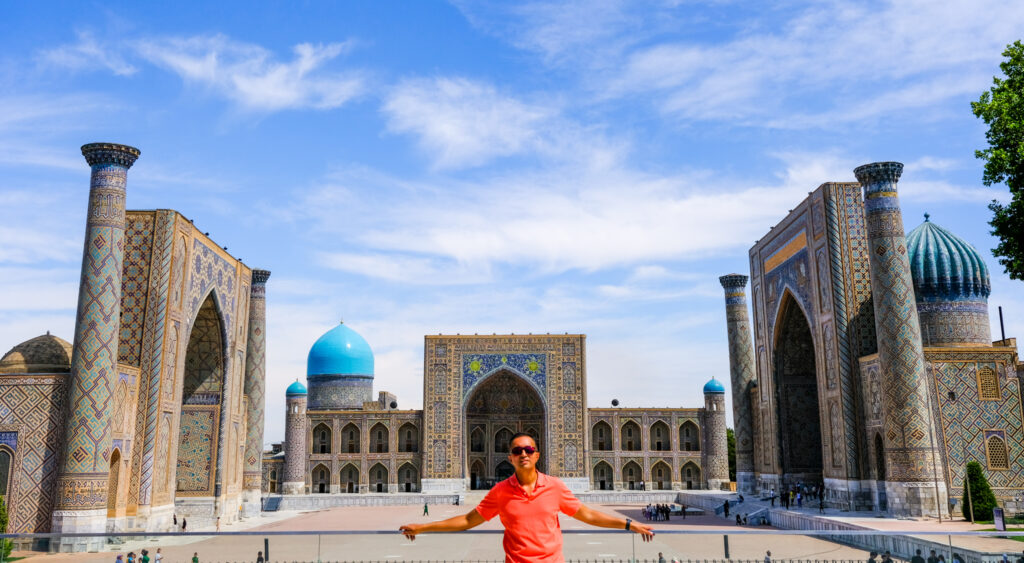
The iconic Registan Ensemble
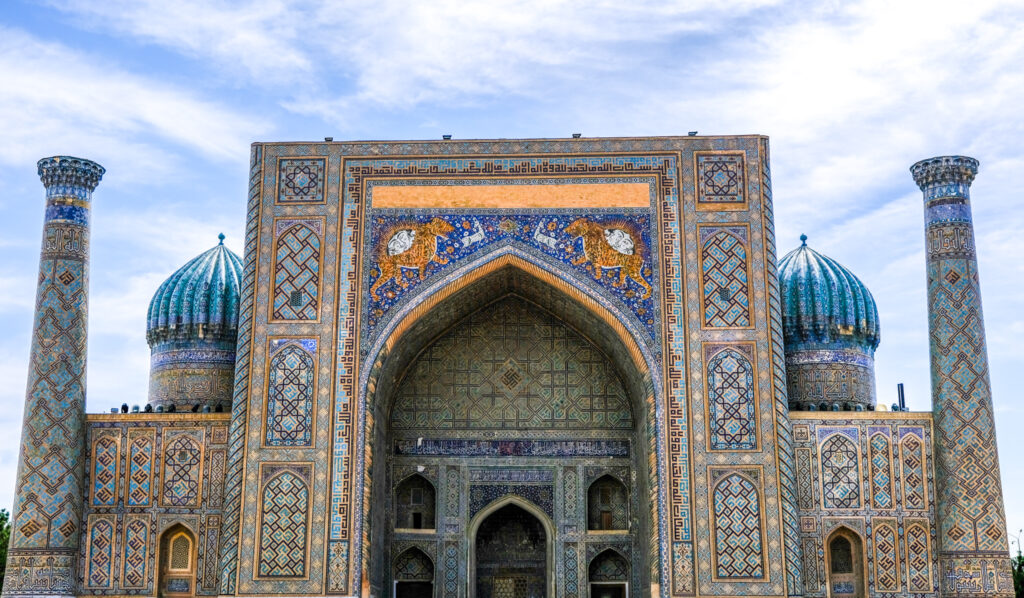
Rich facade of Sher Dor Medrassa
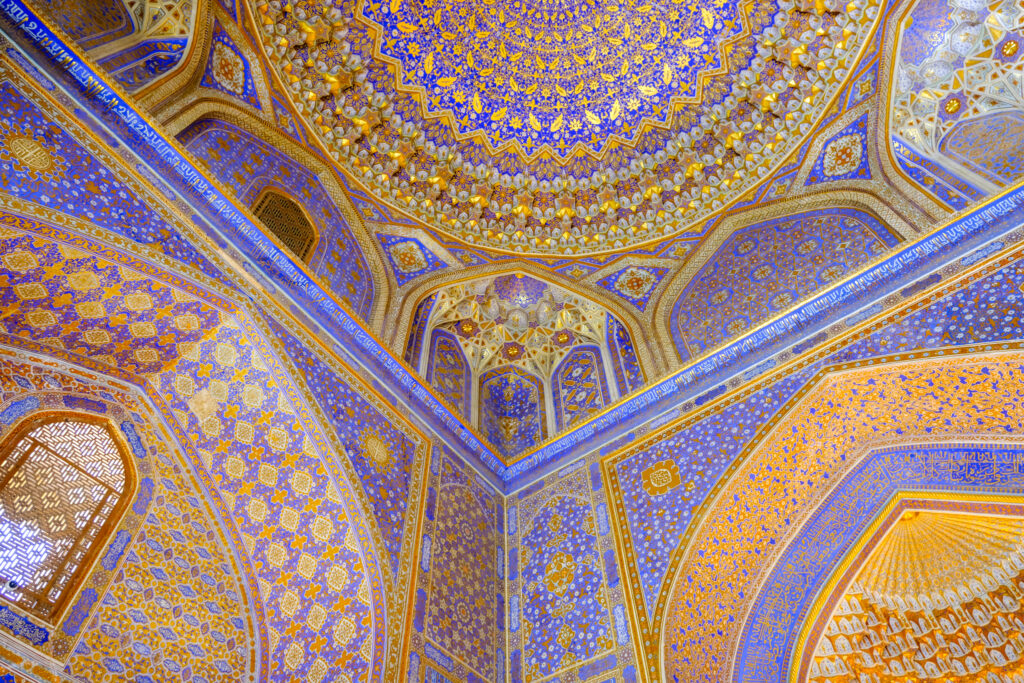
Sublime tilework of Tilla Kori mosque
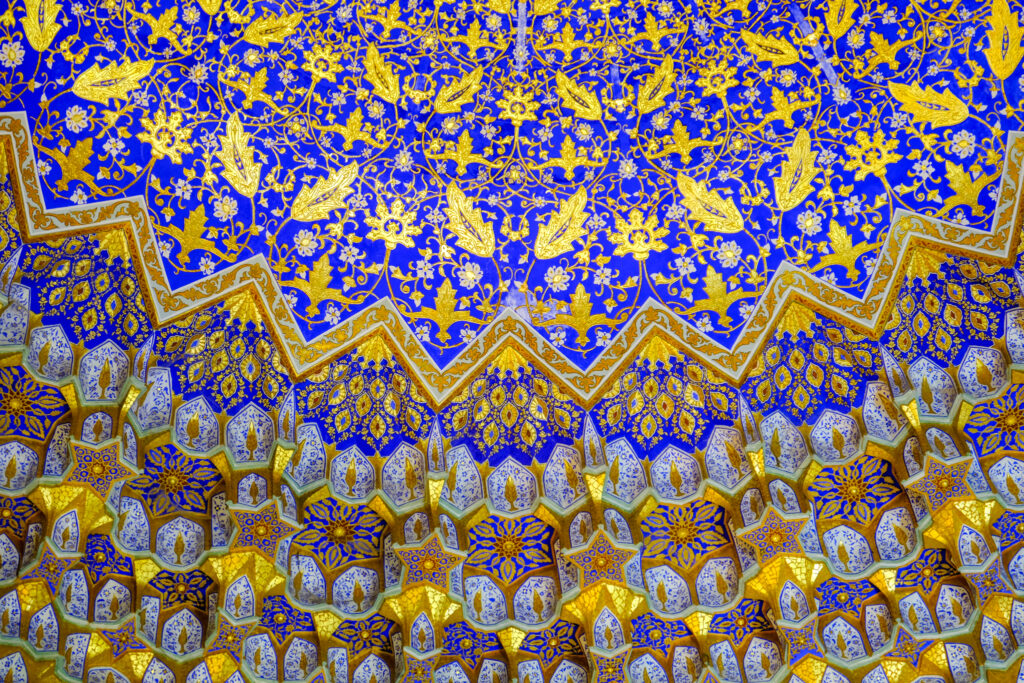
Even more impressive up close
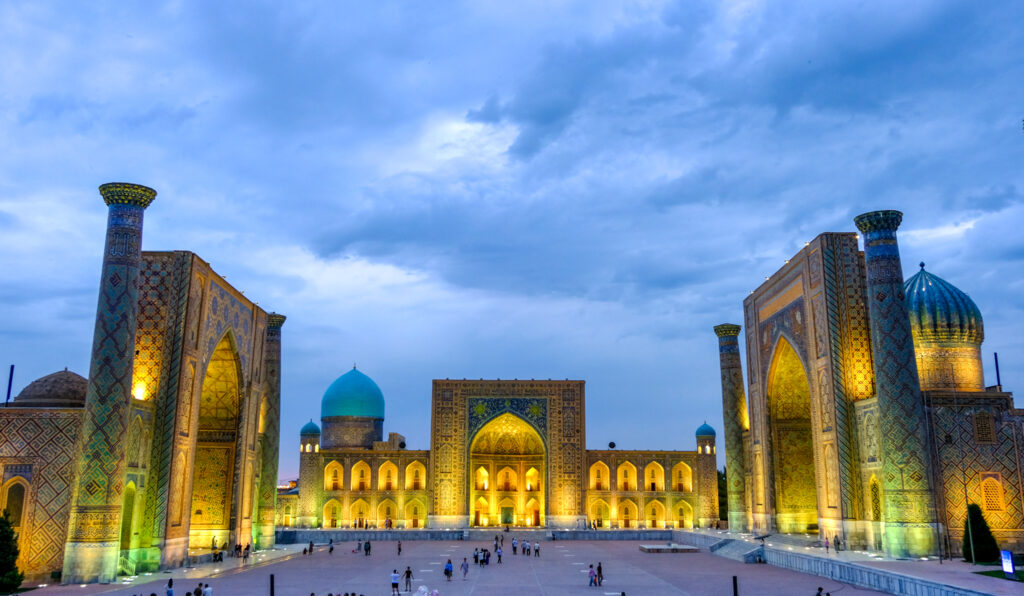
Registan lit up at dusk
Laking it slow at the peaceful shores of Iskanderkul, Tajikistan
The overwhelmingly mountainous landscape of Tajikistan was a welcome respite after the primarily barren desert terrains that I had traversed in Turkmenistan and Uzbekistan. The highlight of my visit was the road trip through the Fann mountain range – an incredibly scenic drive cutting through high passes and deep canyons, on high altitude roads that at times perilously hugged the steep slopes. One of my main stops was at the picturesque Iskanderkul lake, named after Alexander the Great who is believed to have passed through here on his campaign through Central Asia.
Iskanderkul is an alpine lake of glacial origin situated at 2,195m above sea level, and it is framed by the jagged peaks of the Fann mountain range. The hues of the water seemingly change with light, and within just a few minutes I would witness the colors change from shades of bluish green to teal as the sun rays burst though the cloudy skies. The water was incredibly clear, and there were a handful of locals daring to take dips in the chilly waters. Others were busy boating, camping, and cooking bbq lunches on the lakeshore. Iskanderkul was the perfect pitstop for a lovely lake escape during a stunning road trip.
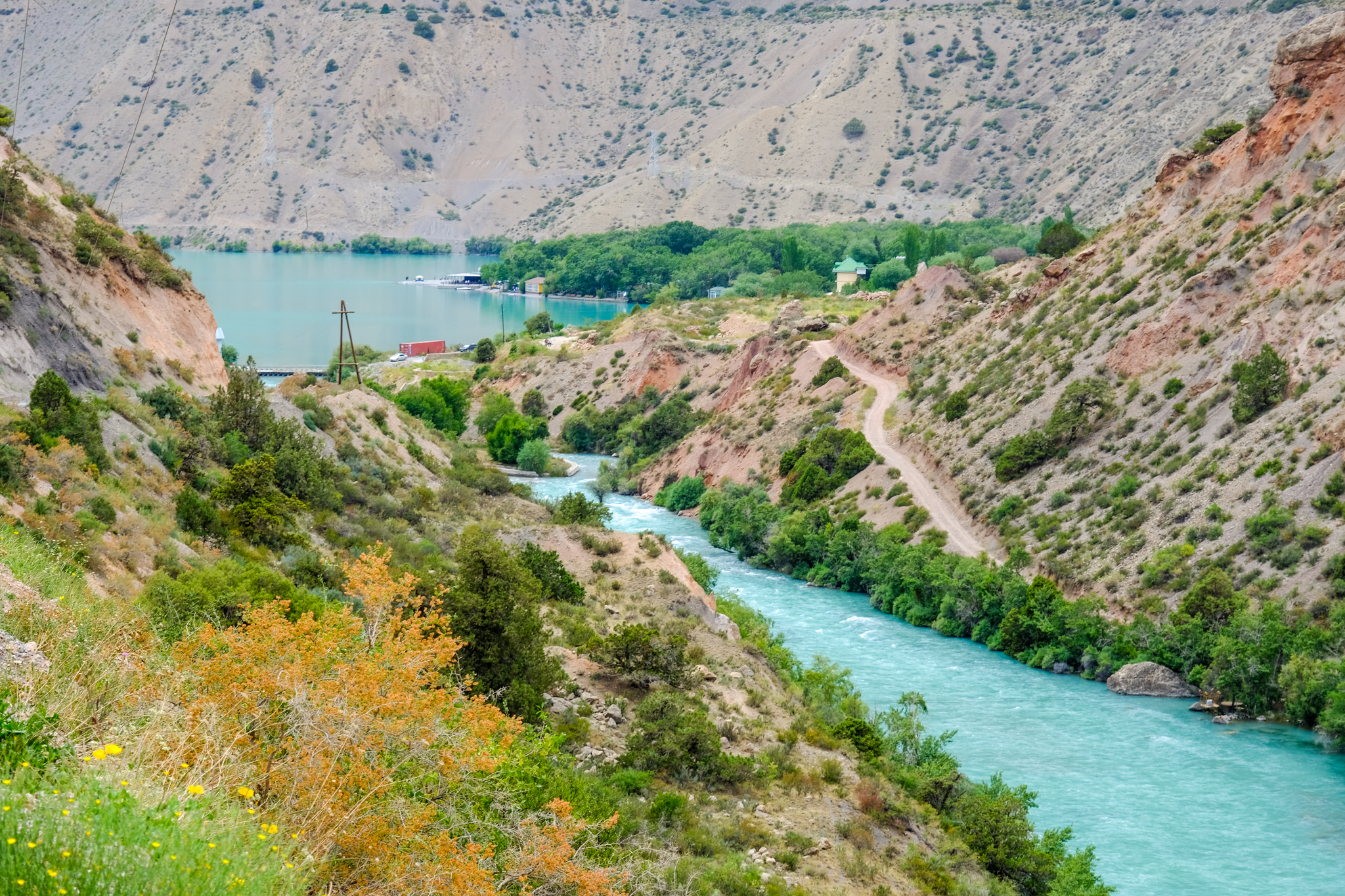
First glimpse of Iskanderkul
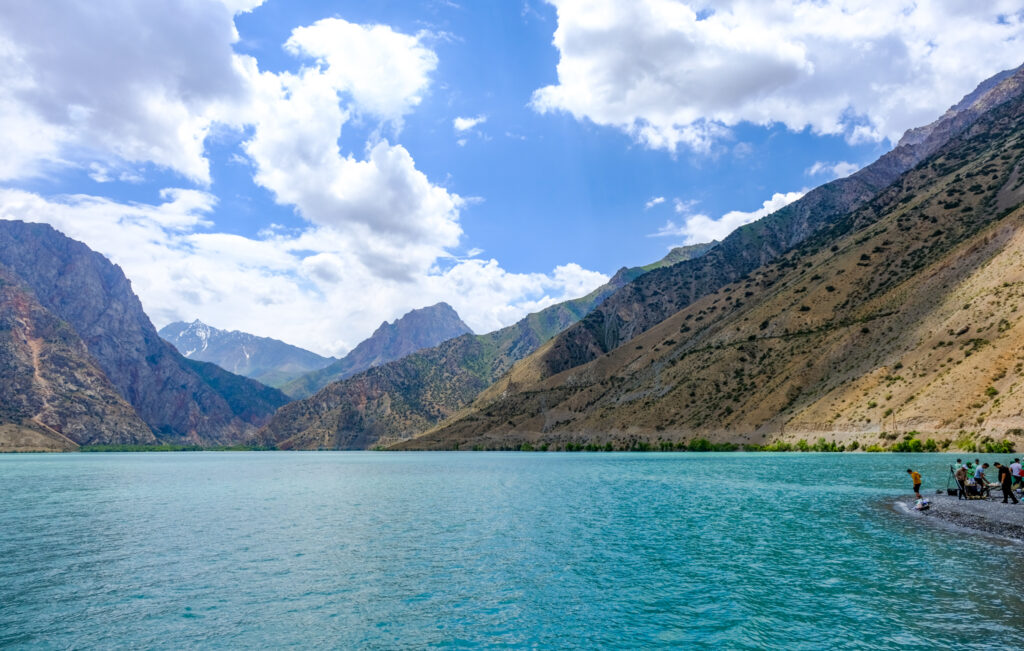
Turquoise waters of the lake
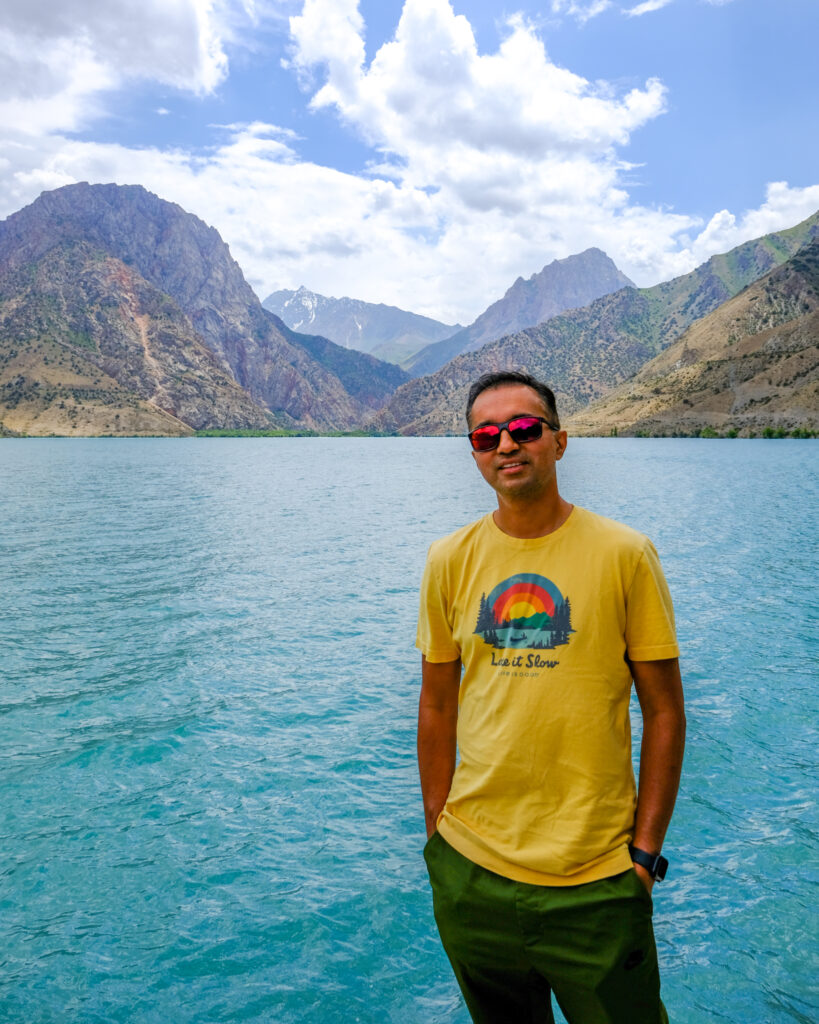
Lake it slow!
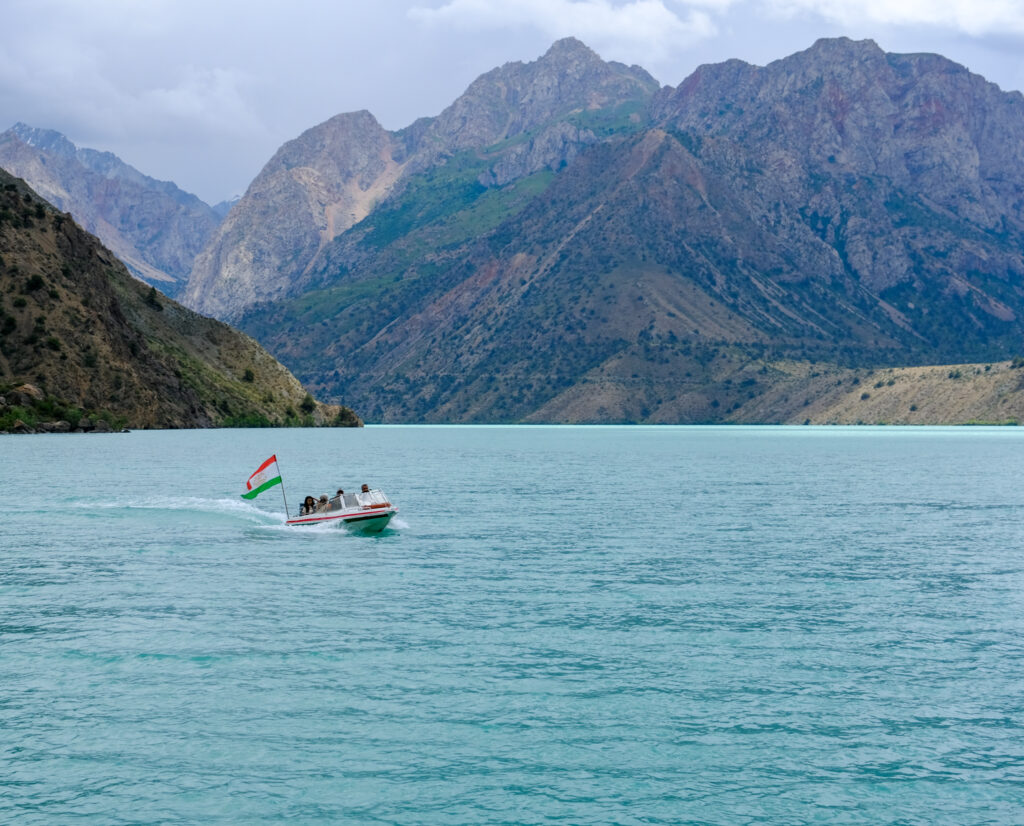
Boating action
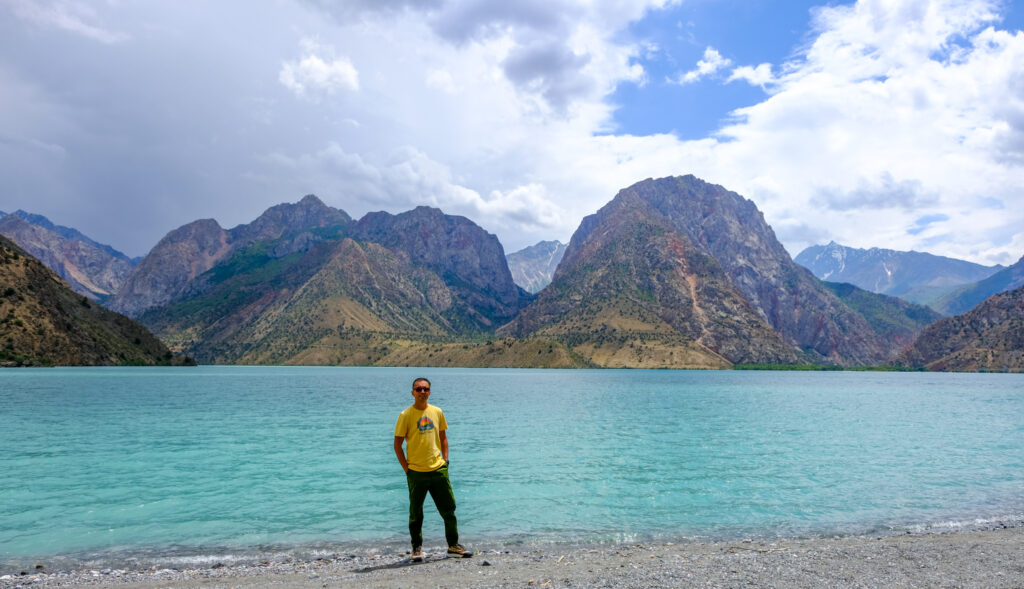
Lakeshore all to myself
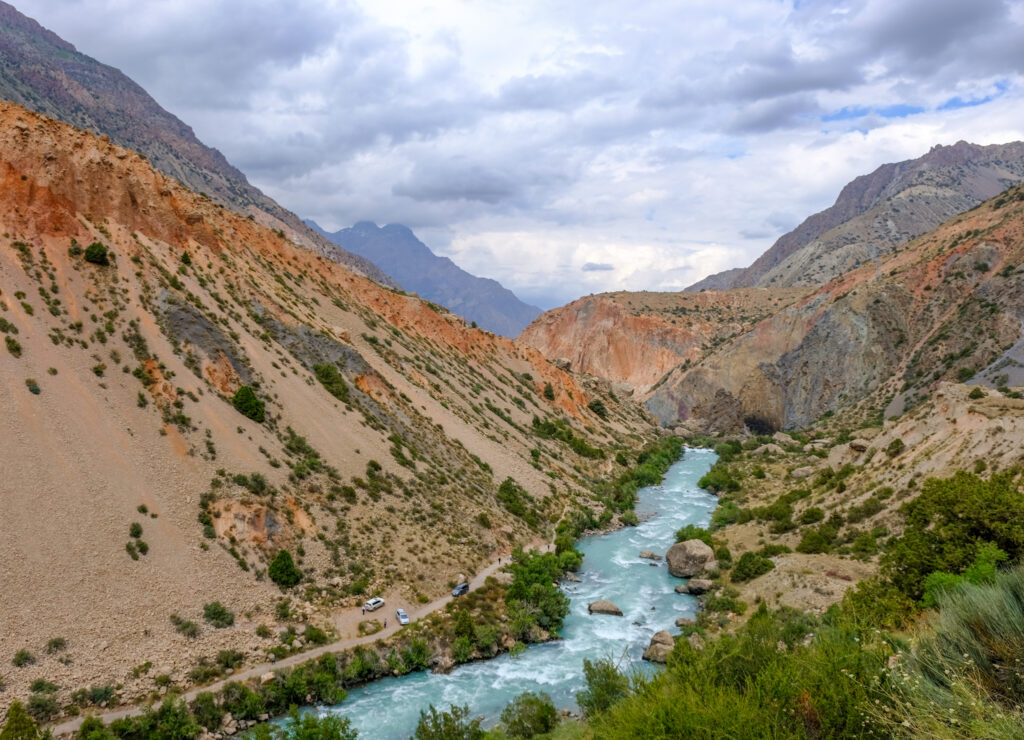
The lake drains into the rust colored canyon
Peeking into the doorway to hell at Darvaza gas crater, Turkmenistan
Deep in the middle of the Karakum desert in Turkmenistan is one of the most bizarre sites I have ever visited – the flaming Darvaza Gas Crater. This one of a kind attraction is a long 4+ hour drive north from the capital Ashgabat, with half of the journey on bumpy dilapidated Soviet era roads. I headed out from Ashgabat on a private tour with Stan Trips for a 2 day overnight yurt stay in the desert, in order to experience Darvaza both at dusk and dawn.
The unique crater was formed when the ground collapsed during Soviet era gas exploration activities in the 1970s. The engineers then set the crater alight in the hope to burn off the gas fumes quickly – but it has instead been burning unabatadely for 53 years now. What began as a human industrial accident has turned into an exhibition of nature’s fury – truly a strange yet awe inspiring spectacle.
The light emitted from the burning crater is visible from miles away at night, and up close the heat from the flames gets unbearable depending on the wind direction. Darvaza means doorway in Persian and at nighttime the blazing flames from the crater truly paint a fiery vision of the gates to hell!
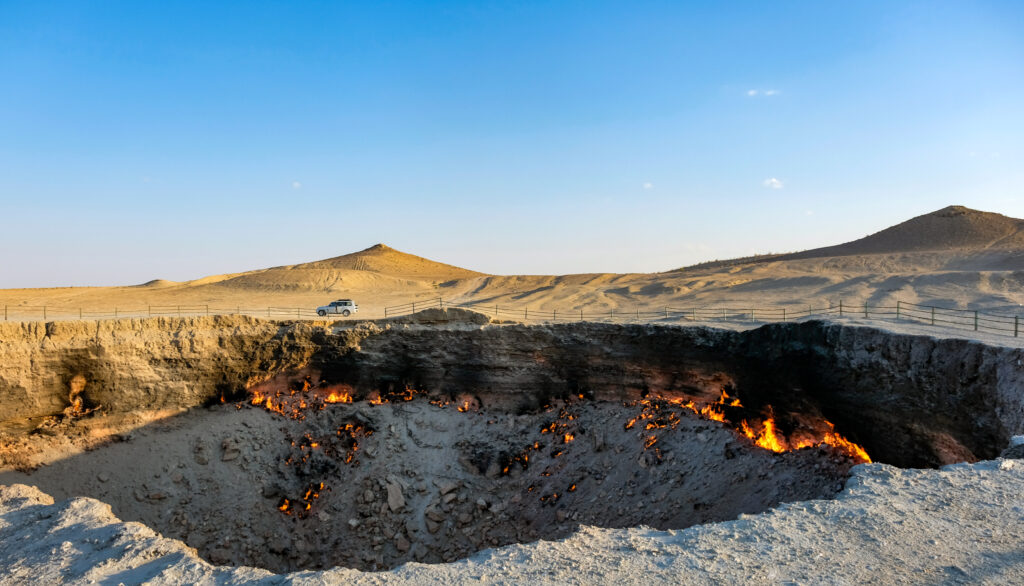
Darvaza crater in the daytime
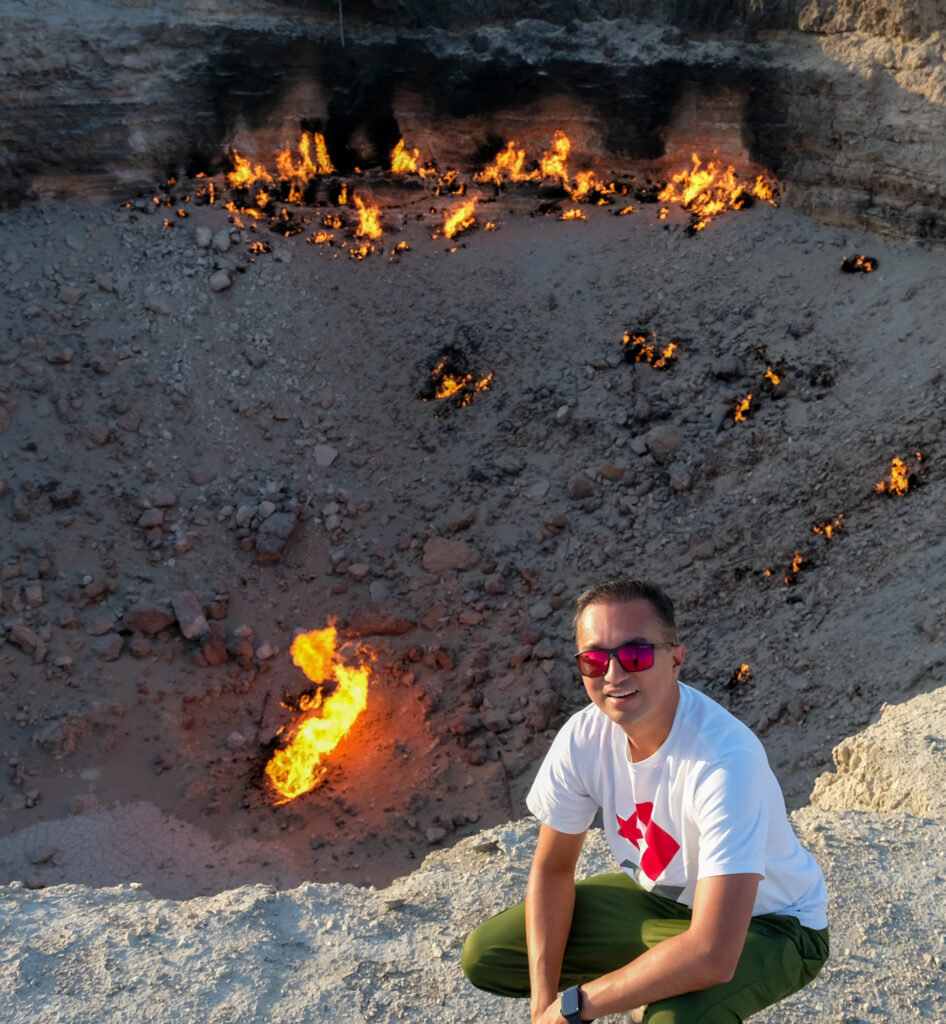
Not as scary at daytime, but still super hot
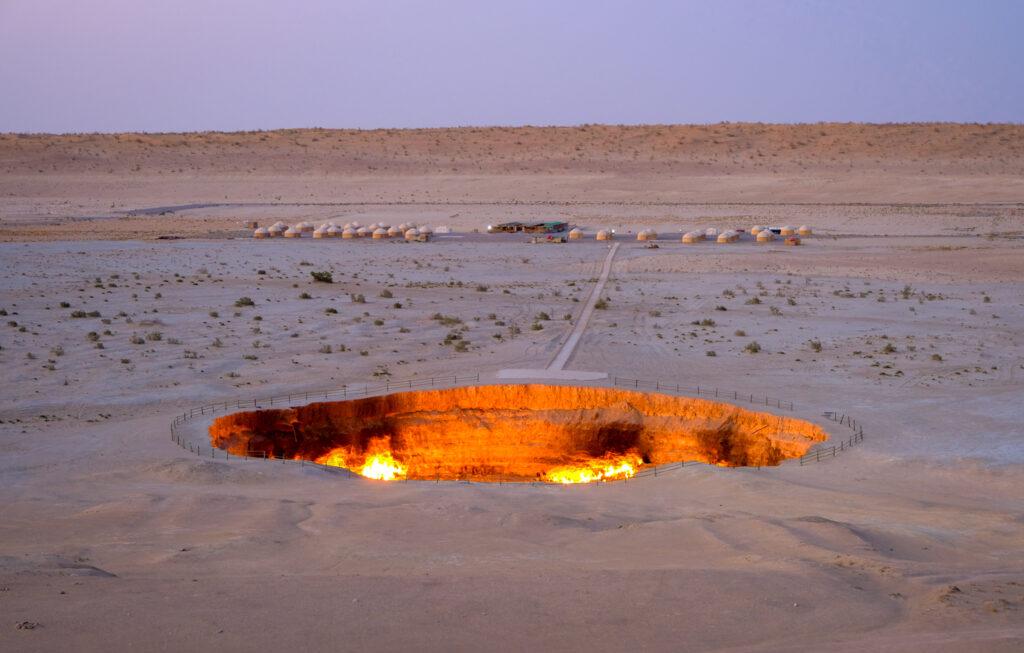
Dusk brings out the brightness of the crater
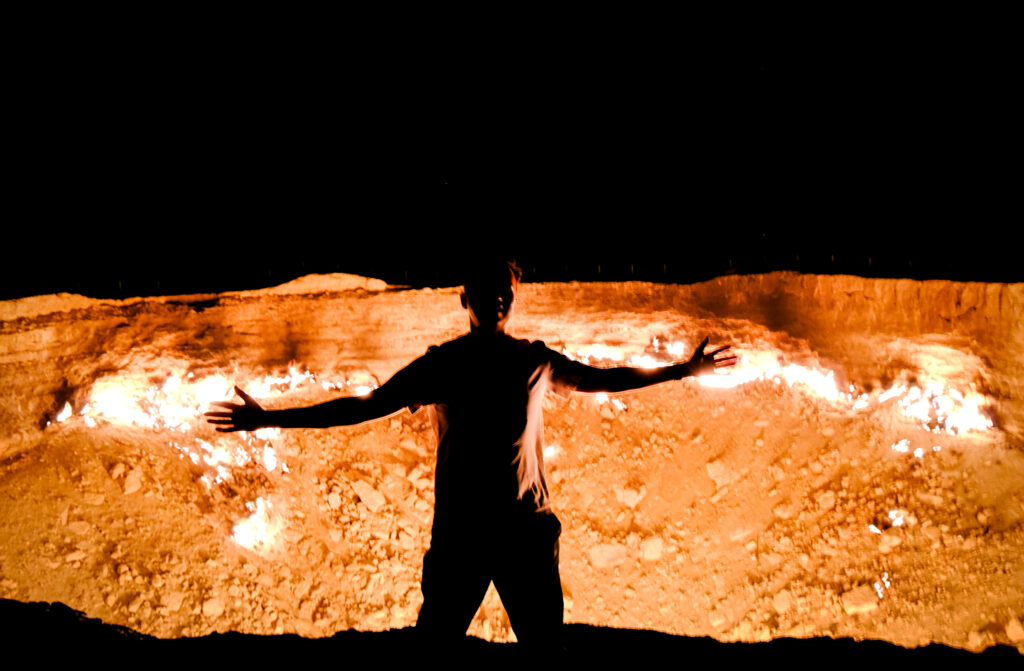
The fiery fury of Darvaza
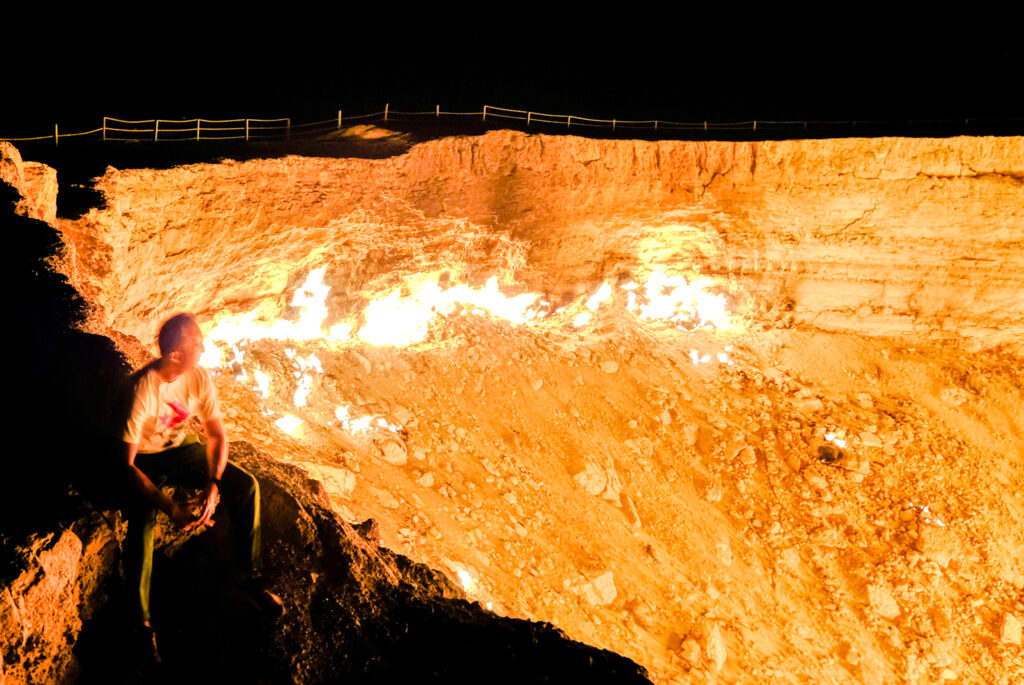
Trying not to get my eyebrows singed
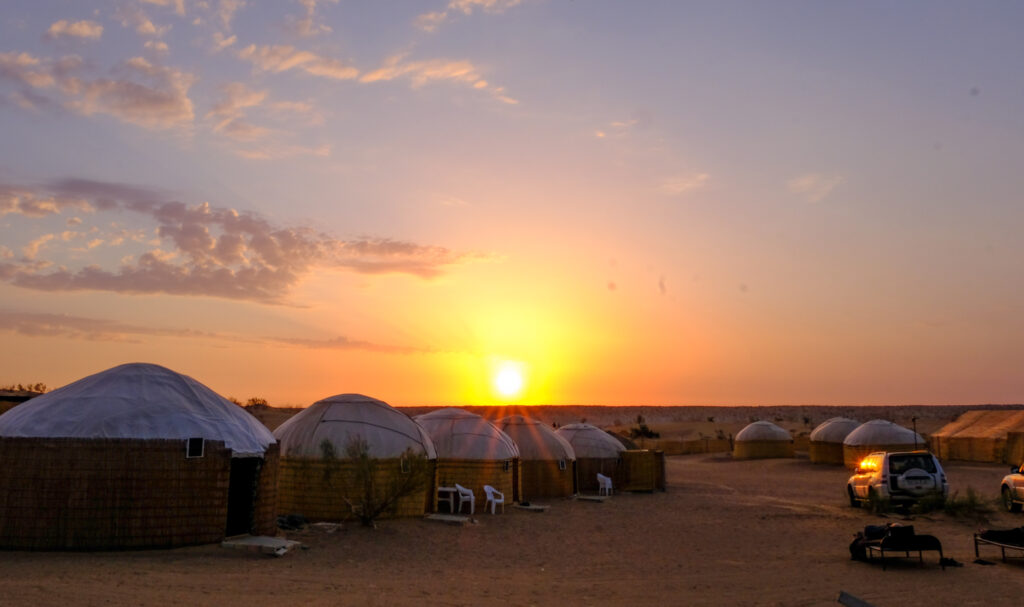
Sunrise over the Yurt camp
Hiking in the alpine splendor of Ala Archa national park, Kyrgyzstan
Ala Archa National Park is a great mountain adventure destination just an hours drive from Kyrgyzstan’s capital Bishkek. Ala Archa means ‘colorful juniper’ in Kyrgyz, and the park is named after the plentiful juniper trees that abound on its slopes. Especially in the summer it offers cooler climes for locals trying to escape the sweltering heat of the city.
I spent a half day hiking in the park taking in panoramic views of its v-shaped valley and the snow capped peaks of the Tien Shan range, and chasing waterfalls and spring fed rivers and streams. First was a steep hike up to the Broken Heart rock formation for a panoramic view of the valley, with almost 900 meters elevation gain within 30 minutes. It was definitely a thigh burner and I was super sore for multiple days afterwards. Then I made my way down the valley floor to the rushing waters of the Ala Archa river which originates in the Ala Too mountains. With rolling green pastures, patches of wildflower and stunning alpine terrain – I could have easily mistaken Ala Archa’s stunning landscapes for the mountain slopes of Europe or the Pacific North West.
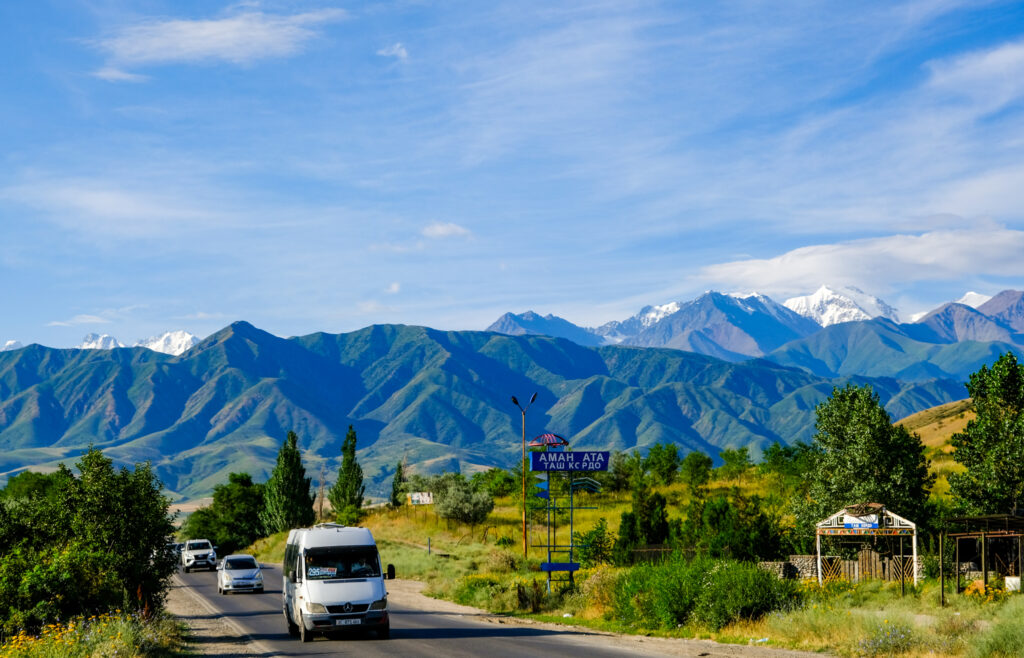
En route from Bishkek to Ala Archa
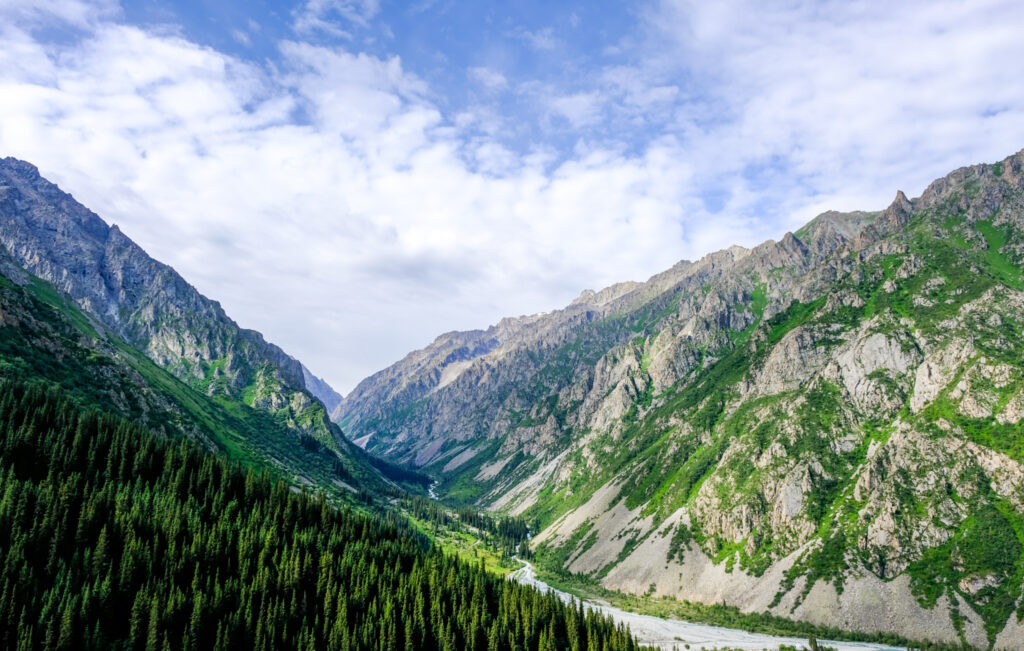
The v-shaped canyon of Ala Archa
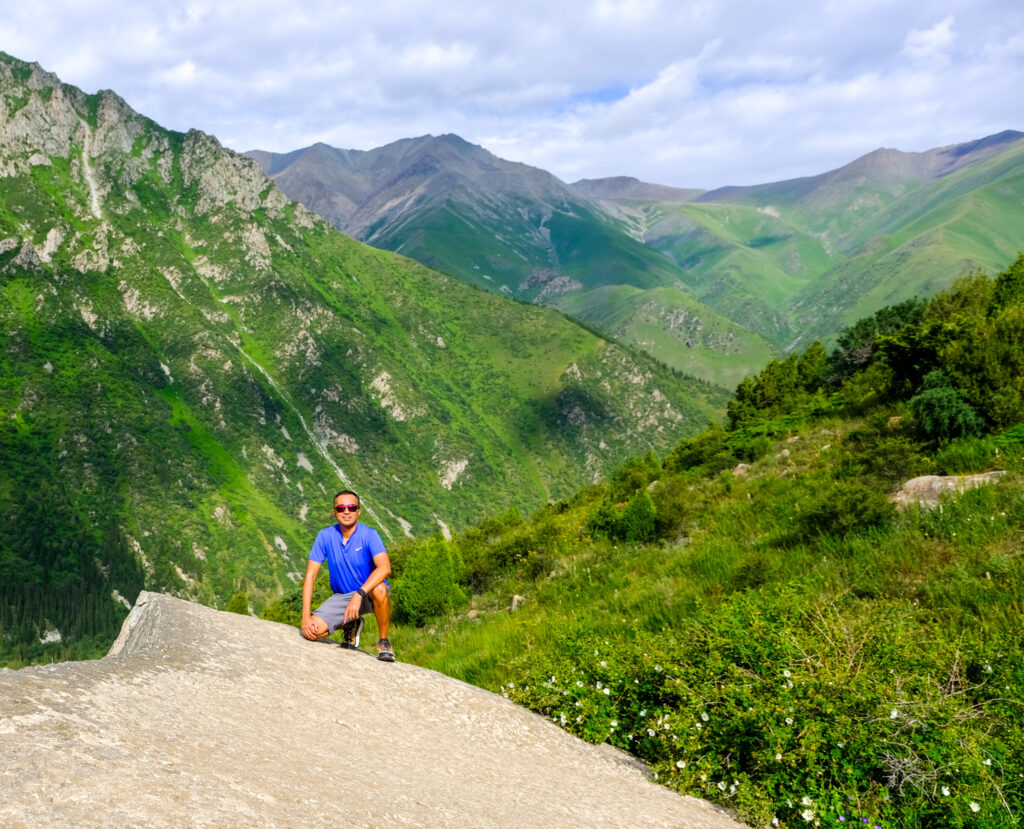
At the broken heart viewpoint
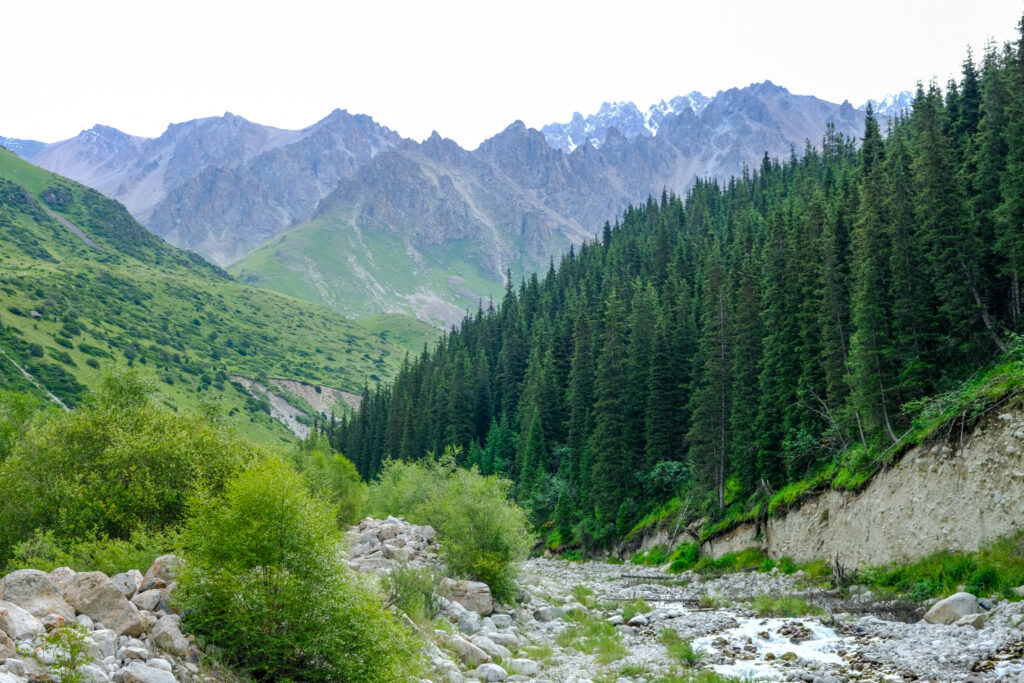
Peaks, forests, streams – its all here
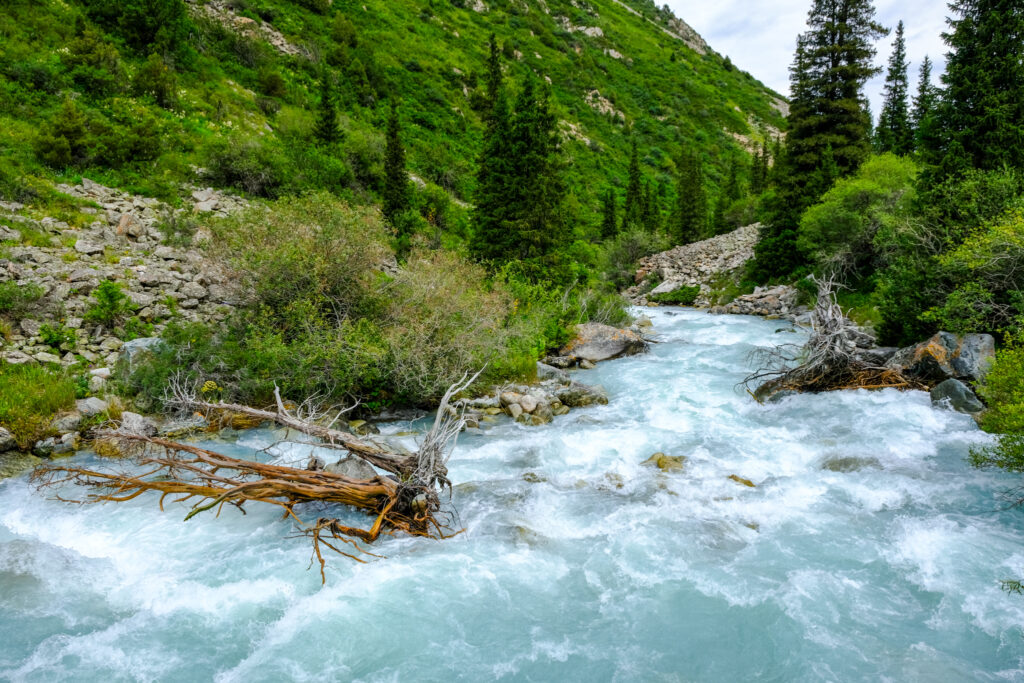
Rushing icy waters of Ala Archa river
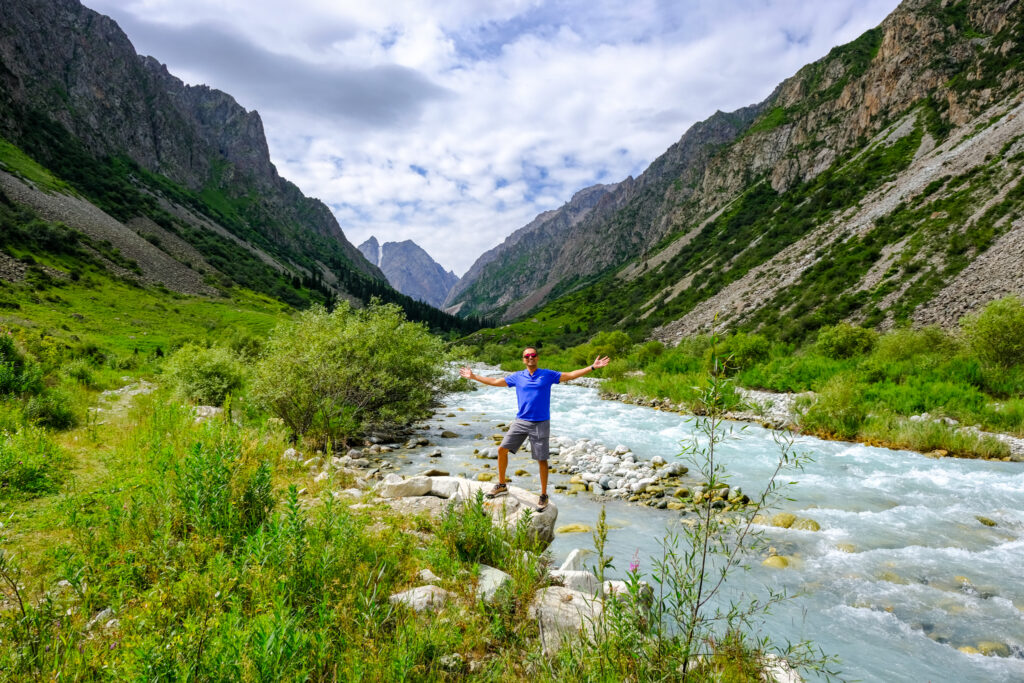
Made it down to the river
Exploring the natural wonders near Almaty, Kazakhstan
Although most of Kazakhstan’s land area is steppe grassland, the south eastern region near Almaty offers some diverse and stunning natural attractions within an area known as the Golden Triangle.
Charyn canyon is often referred to Kazakstan’s mini version of the Grand Canyon. With towering giant red rock formations, a winding narrow canyon, and the rushing Charyn river at its base – it is easy to see the comparisons. Wind and water eroded the red sandstone over millions of years, forming and engraving the stryated gashes into the Kazakh steppe. There are sweeping panoramic views of the canyon from the upper trail path, and a 1.5 km trek through the “Valley of the Castles” canyon to the river provides up close views of the giant rock formations.
The Altay mountain range offers an equally impressive collection of lush green canyons and alpine lakes. But to get there, I first had to take a Soviet style “off-road” vehicle followed by a horse ride up into the mountains. The highlight was Kaindy Lake – a turquoise alpine lake that is striking for its forest of submerged birch trees that seem to be stuck in time. The tree stumps were preserved in the frigid waters of the lake after the valley was flooded, creating quite a surreal sight. I also visited the nearby Kolsay lake in the same region, a larger and equally impressive lake that is popular for boating in the summer.
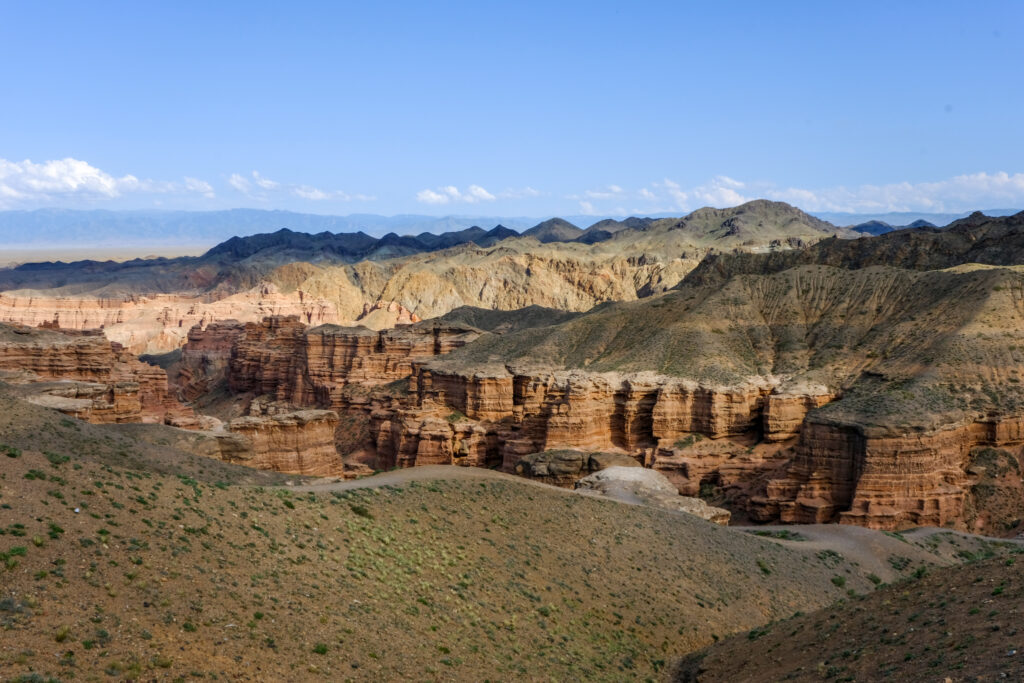
The deep gash of Charyn Canyon
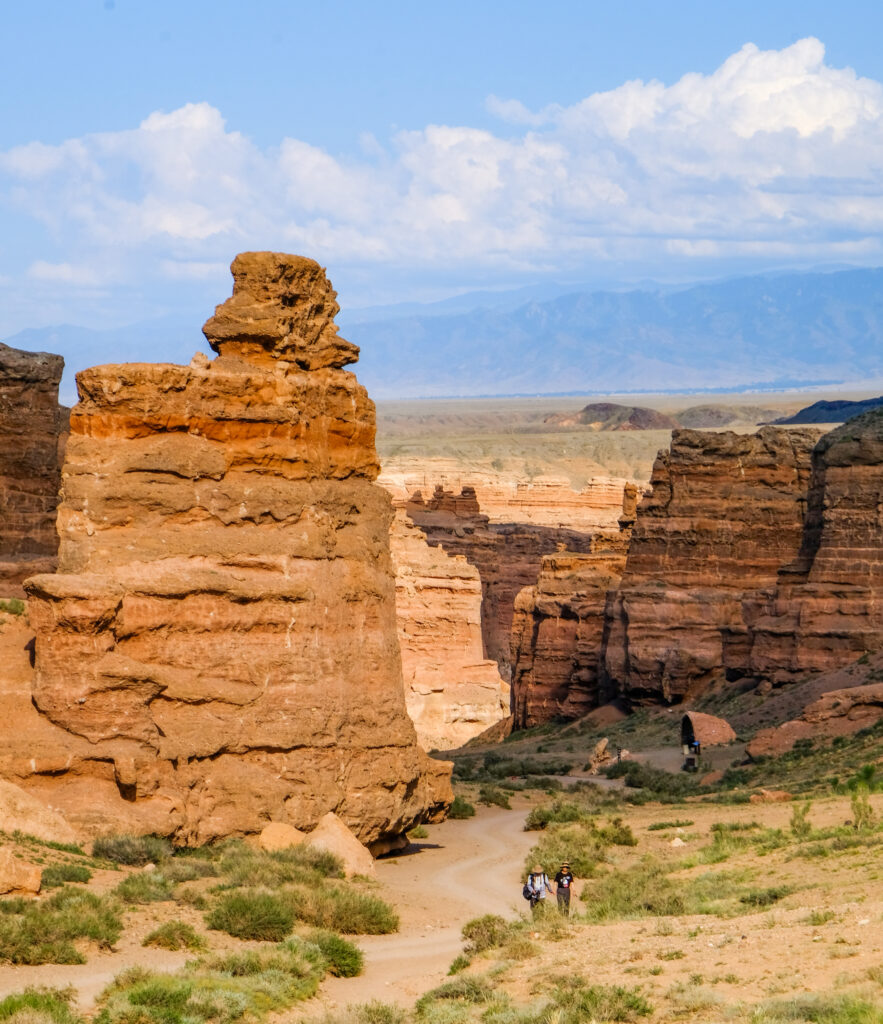
Entering the Valley of Castles
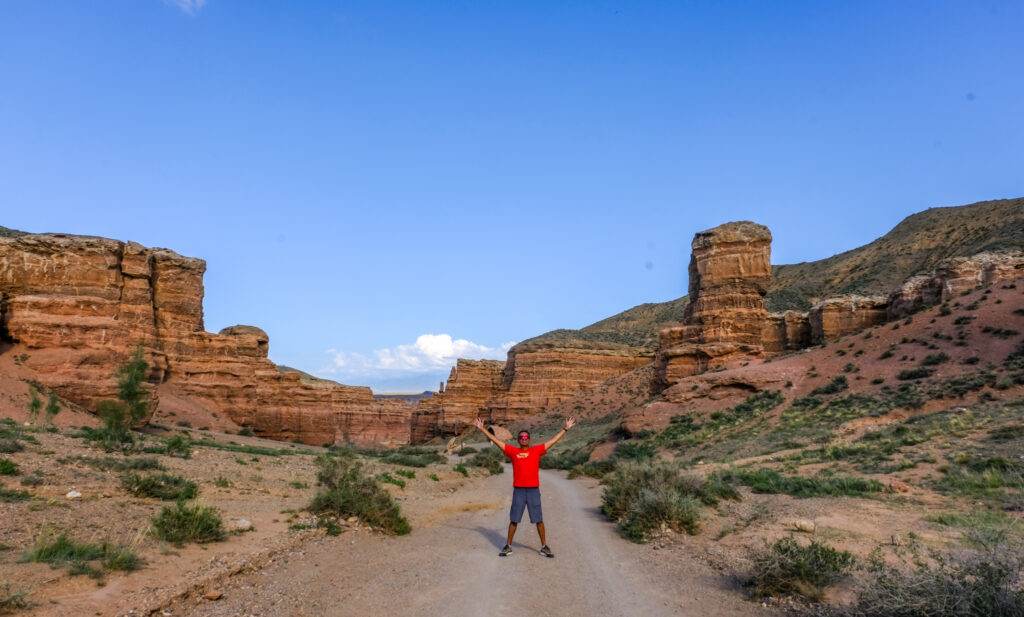
Halfway through the hike
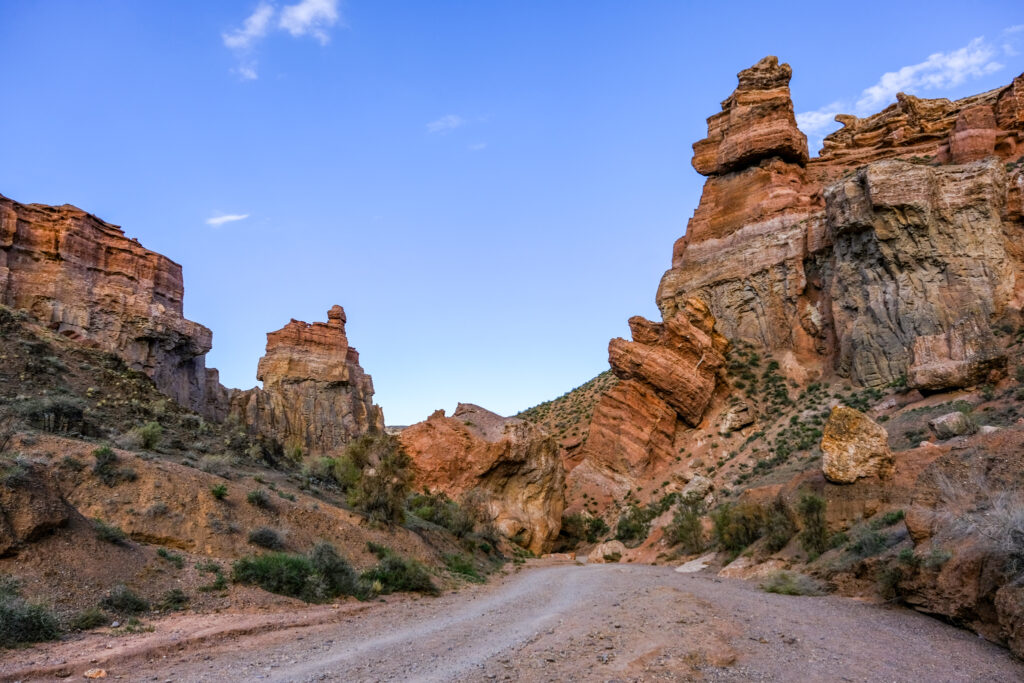
Towering rock formations
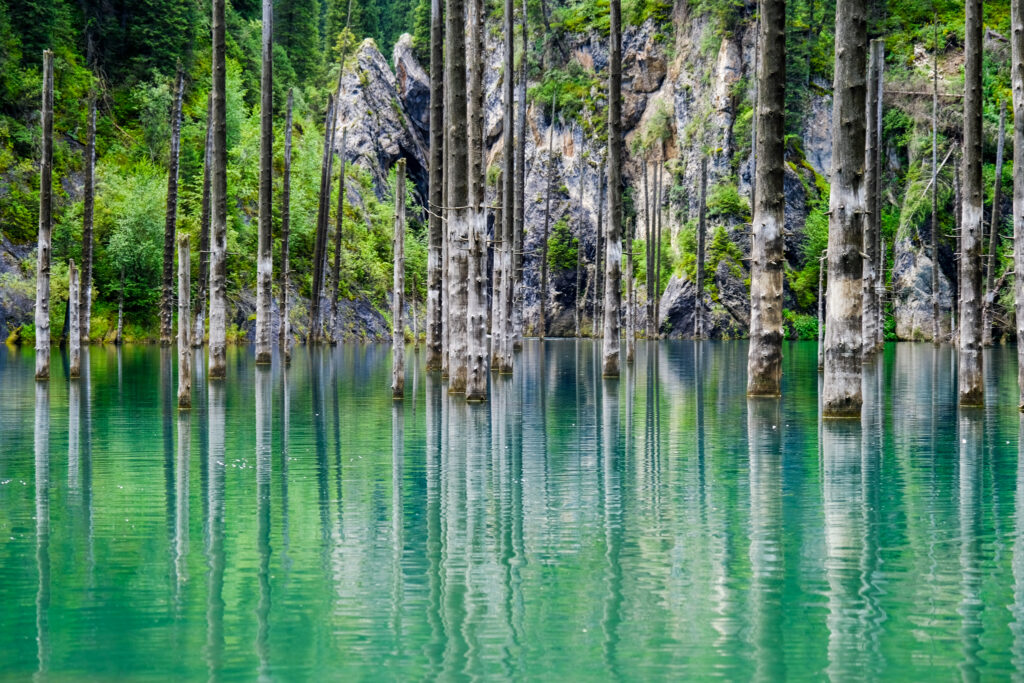
Sunken birch trees in Kaindy Lake
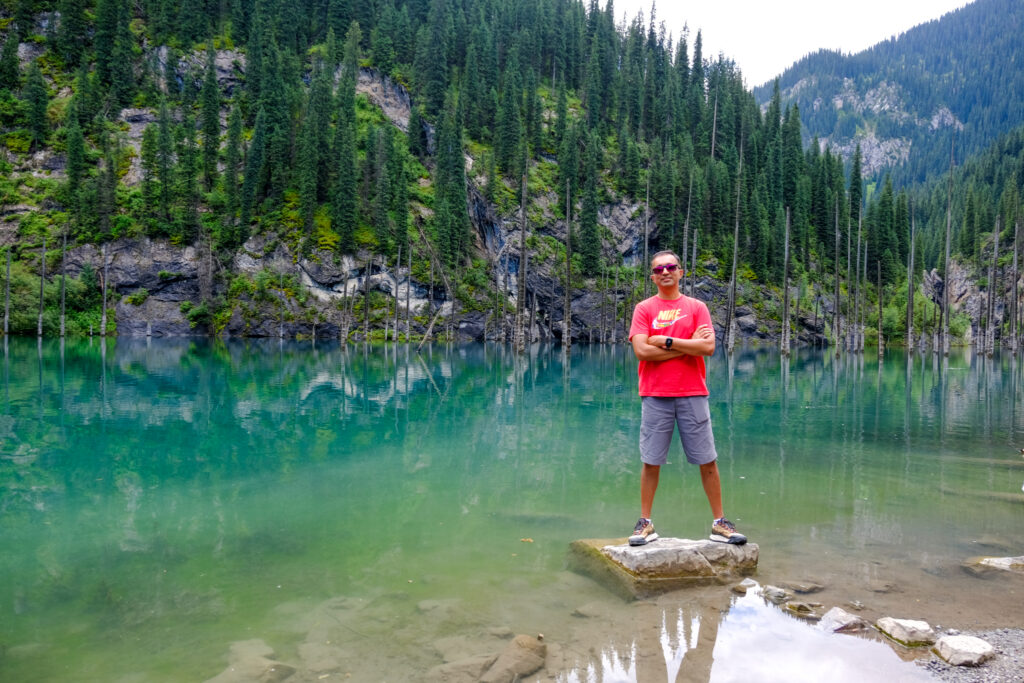
On steady ground – don’t want to sink like the trees!
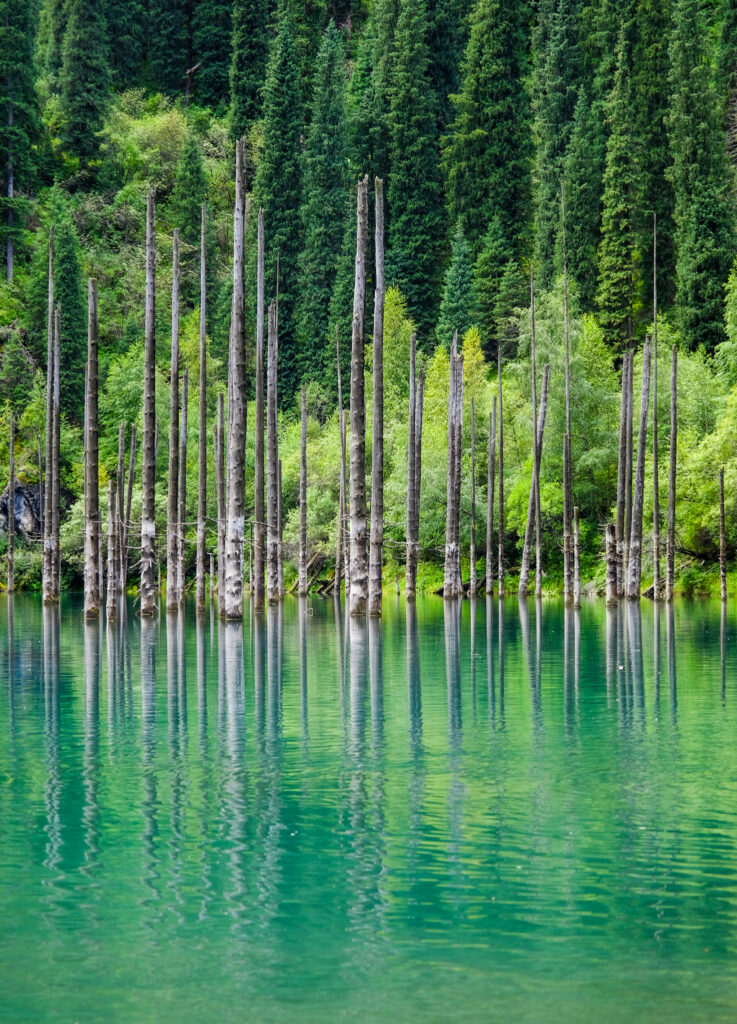
Quite the surreal sight
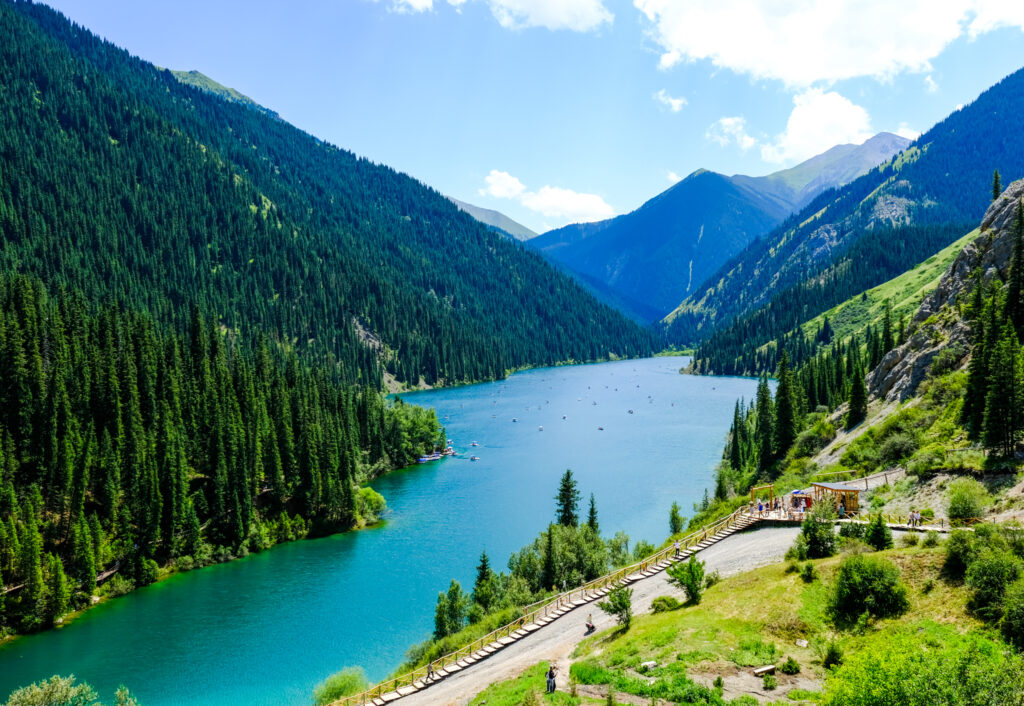
Pretty Kolsay Lake
Cuisine of Central Asia
The nomadic heritage of the region lives on in its food and drink, with most dishes heavy on meat and dairy products. Since nomads would need to be on the move often, emphasis was on easy-to-prepare meals, cured meats, and fermented milk products that could be easily transported and last long. Besides the ubiquitous Samsa (similar to samosas) and Manty (meat dumplings), I encountered some uniquely Central Asian fare as well – here is a sampling platter of the hits and misses.
Plov
National dish of Uzbekistan and Turkmenistan. Rice, carrots, onions and raisins are cooked separate in animal fat (!) then assembled in layers when serving – a veritable cholesterol bomb on a plate.
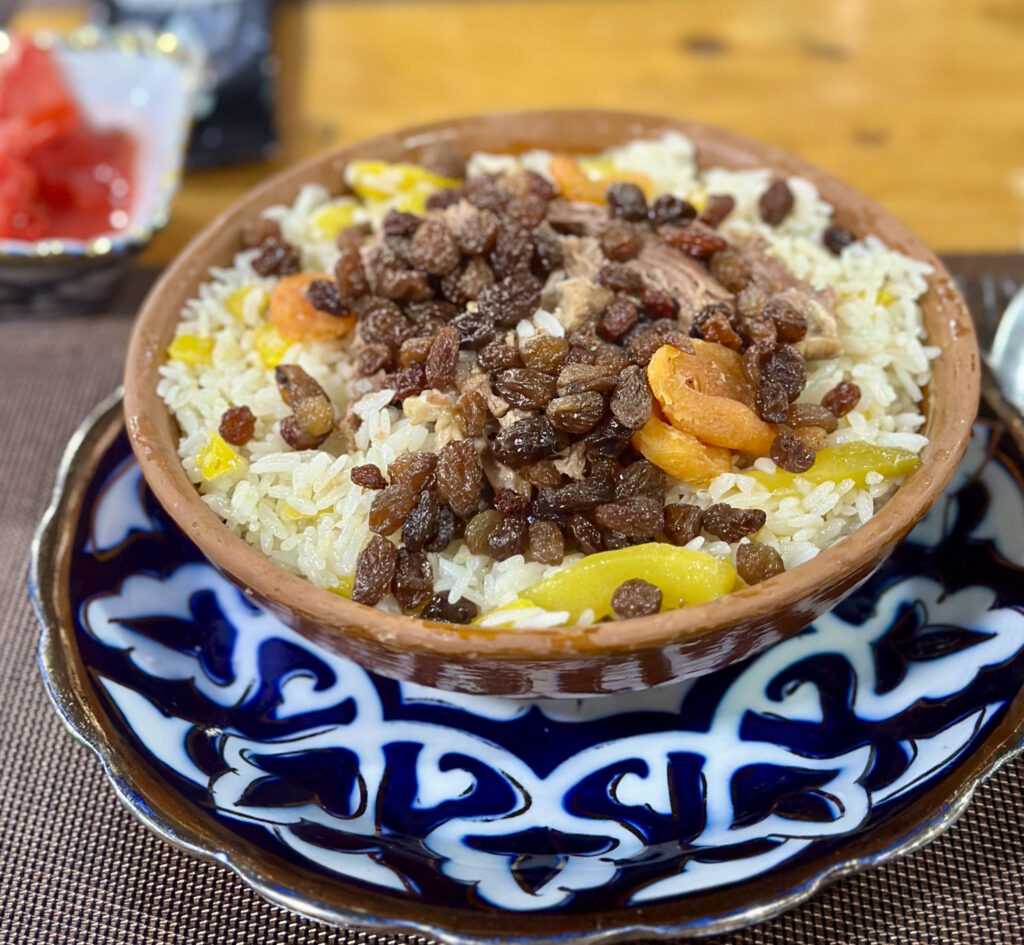
Shashlik
Charcoal grilled lamb, beef and chicken meat on skewers, using either minced or cubed meats.
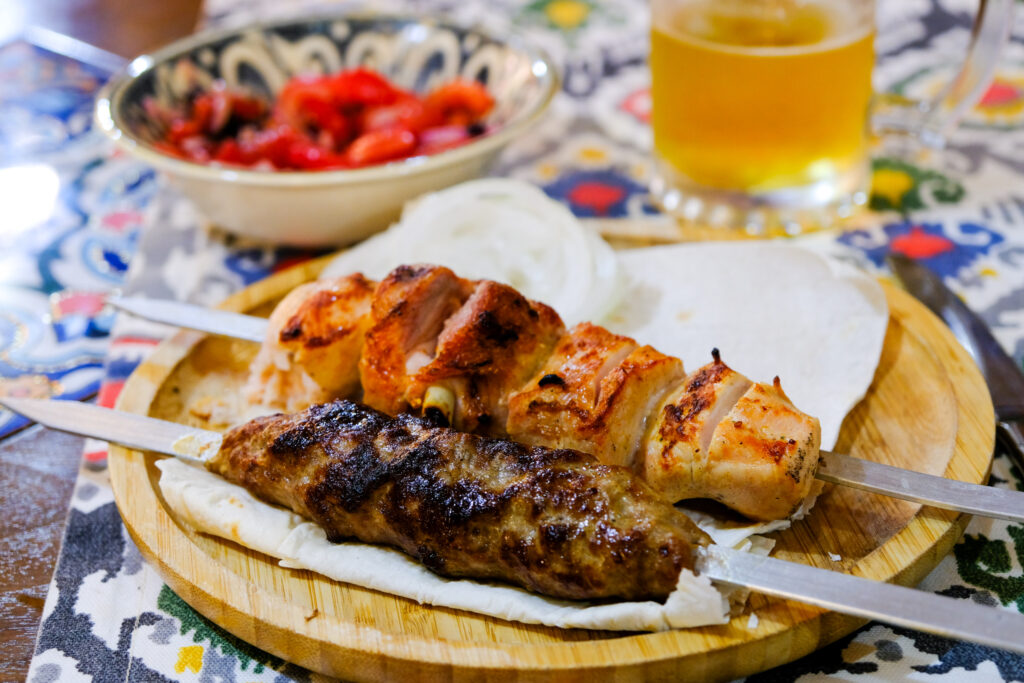
Beshbarmak
The national dish of Kazakhstan – flat noodles cooked in meat broth and served with horse meat and sausage. Definitely an acquired taste.
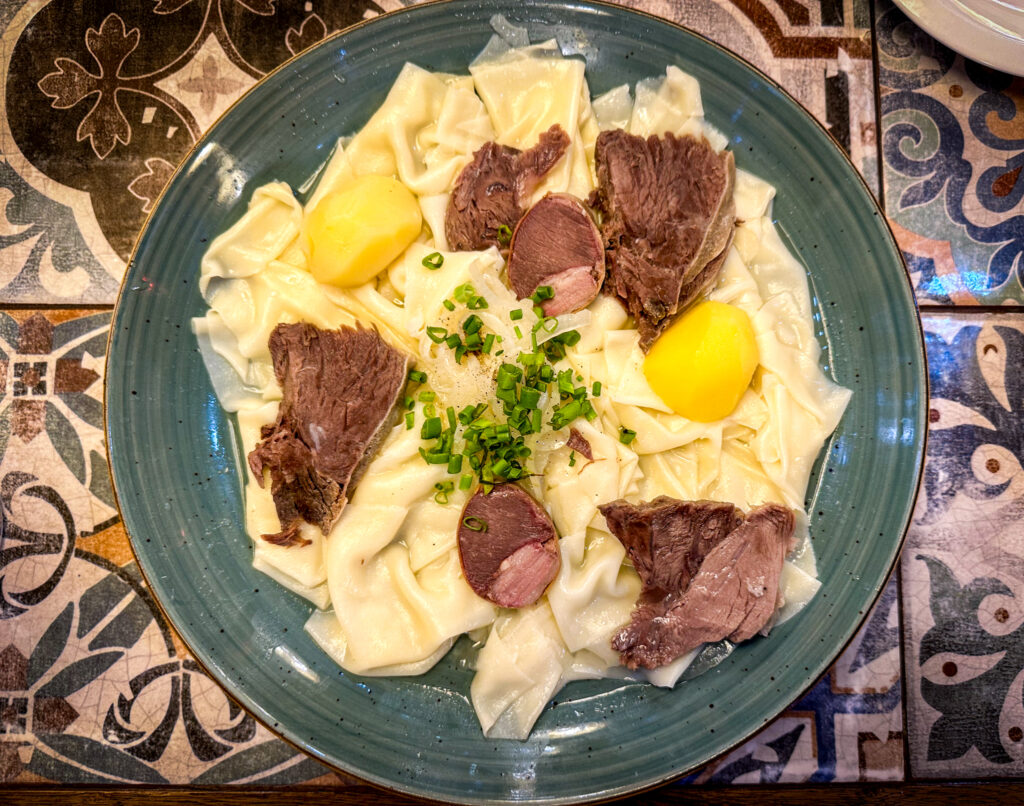
Langban
Hand pulled noodles served with meat and peppers, then drenched in a spicy sauce
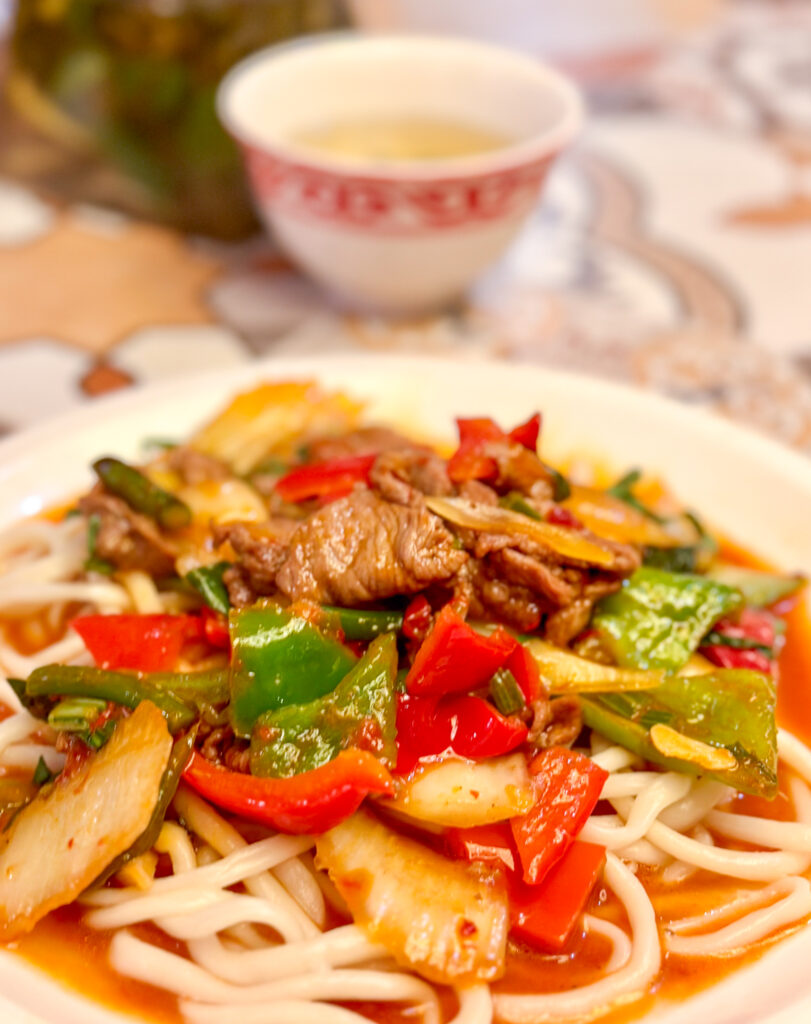
Khumys
Mildly alcoholic drink of choice for the Kazakhs and Kyrgyz – fermented horse milk that tasted like a sharply acidic and bitter rotten buttermilk. I was done after 2 small sips 🤢
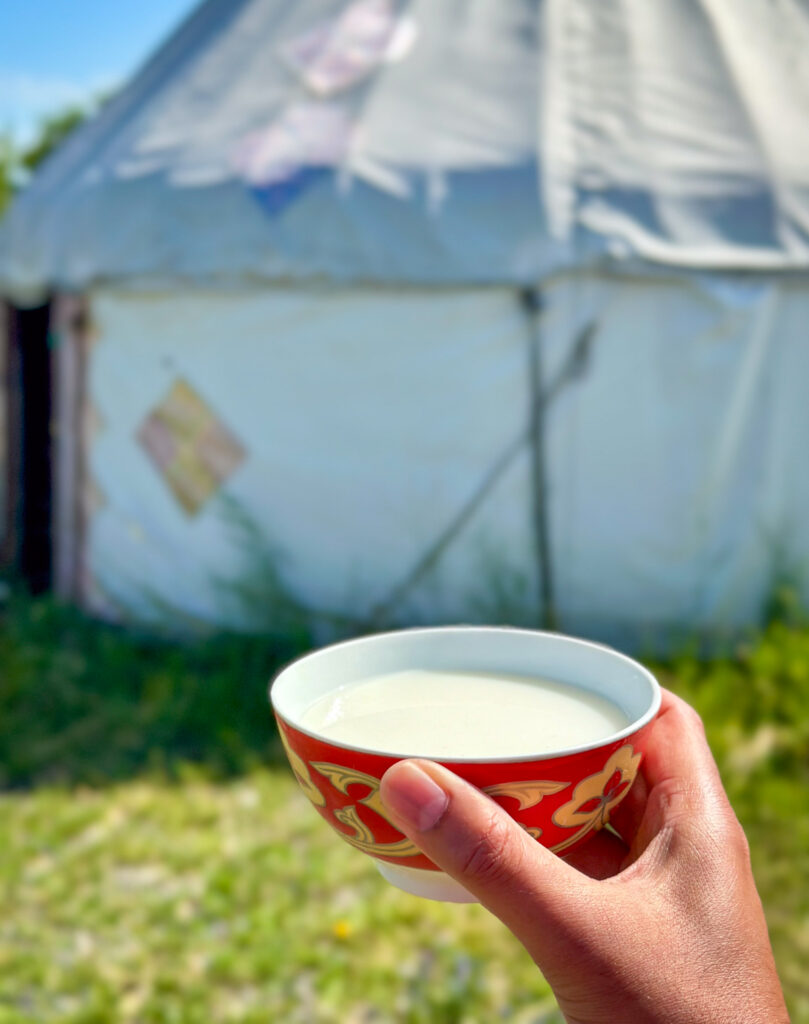
Dried fruits, nuts & melons
Dried fruits and nuts are a staple and found widely in the bazaars across the region. Melons are probably the most popular fruit and are can be seen stacked on roadsides everywhere.
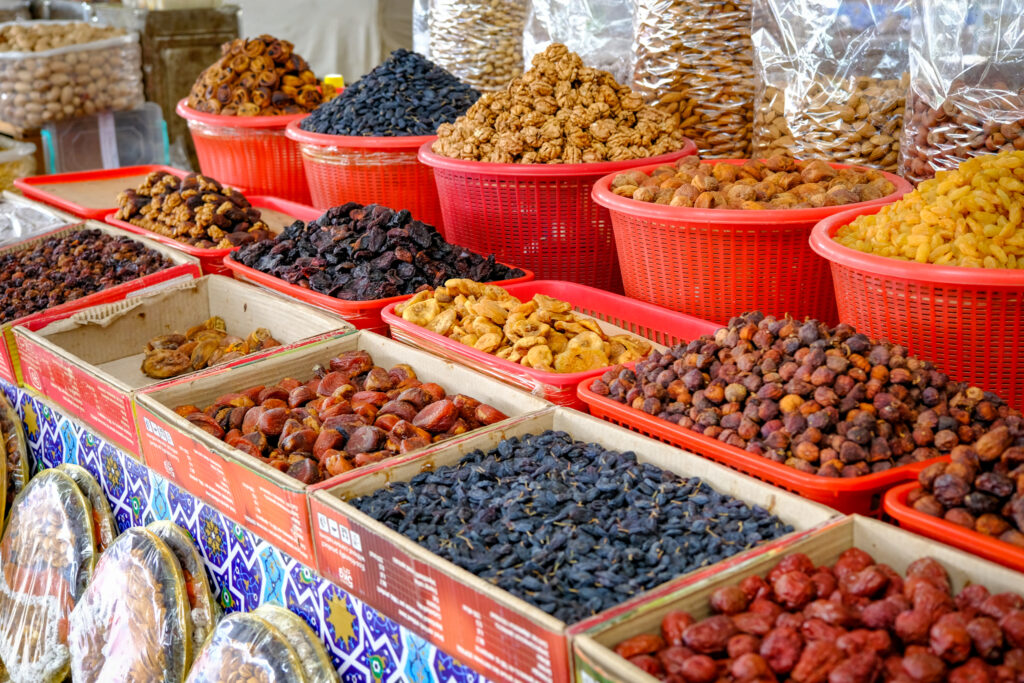
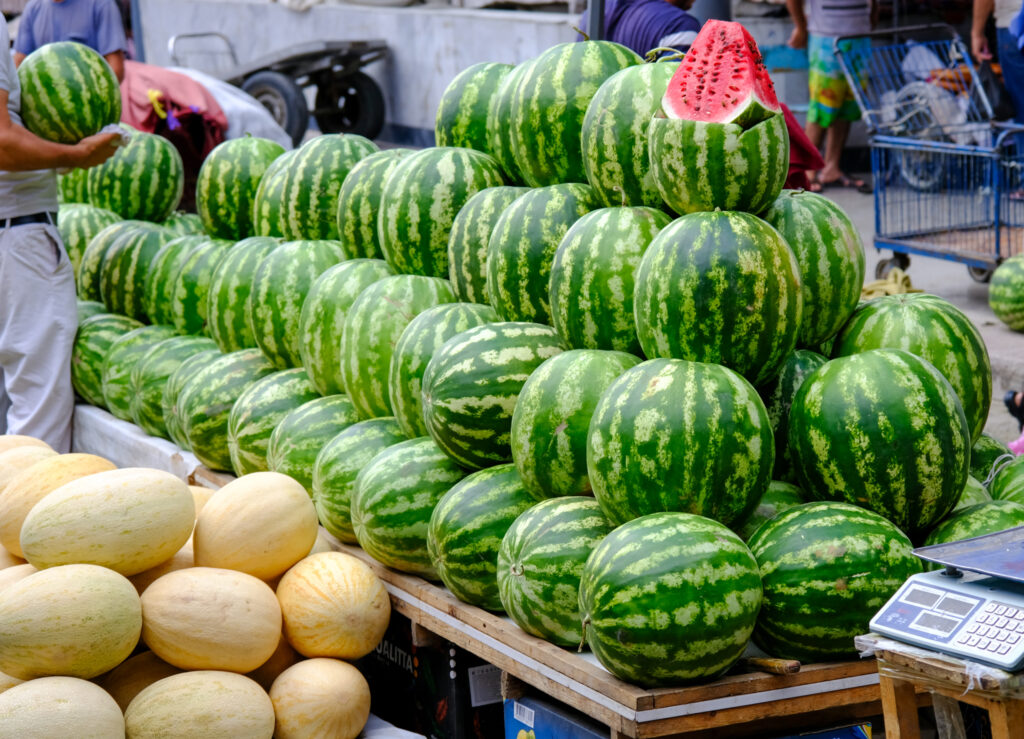

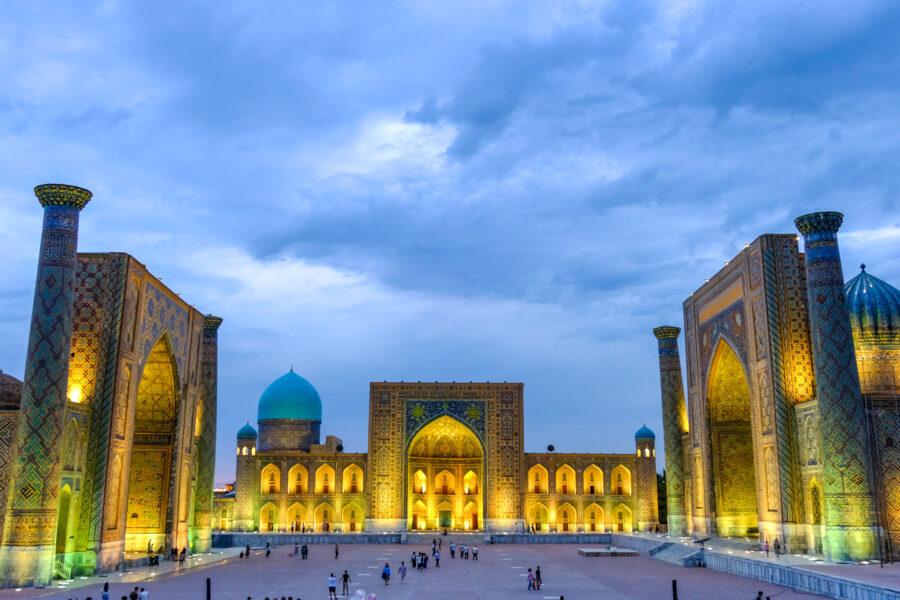
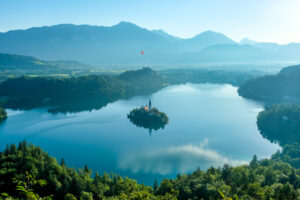
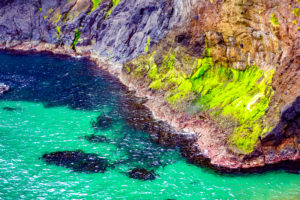
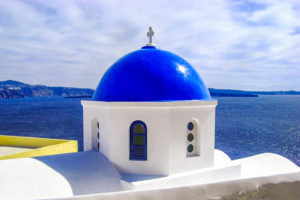




1 Comment
Leave your reply.